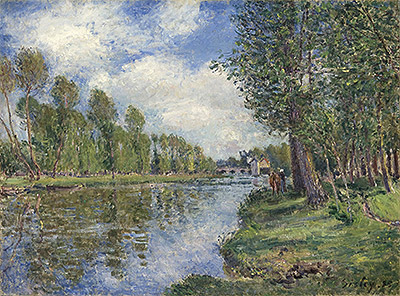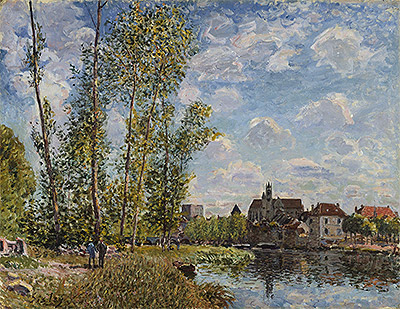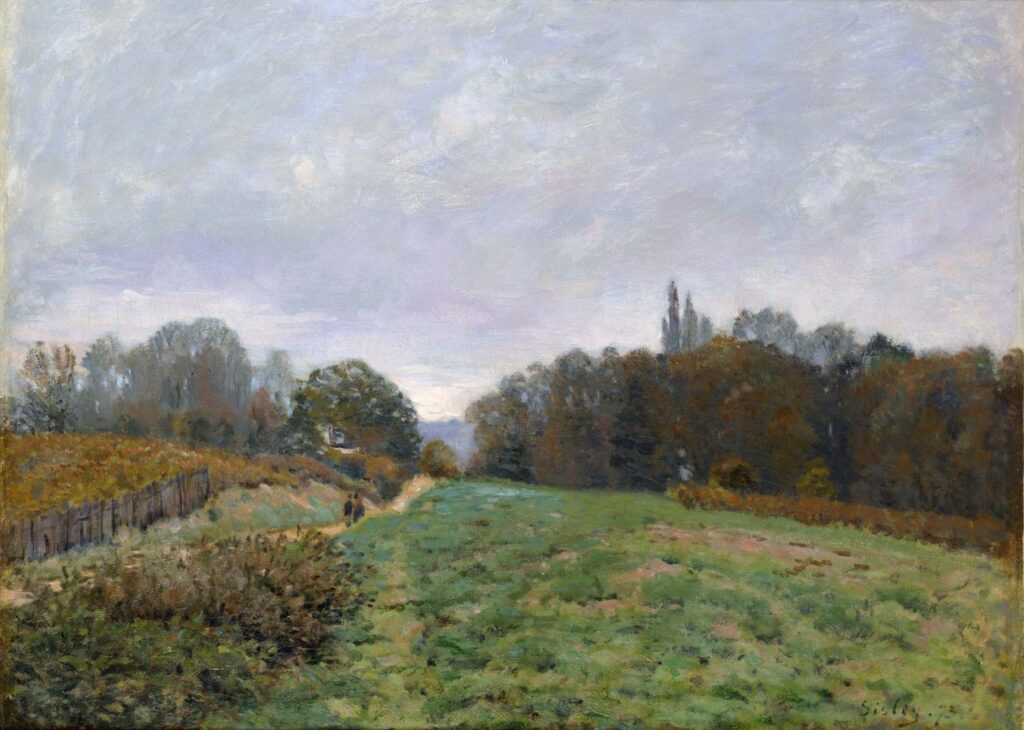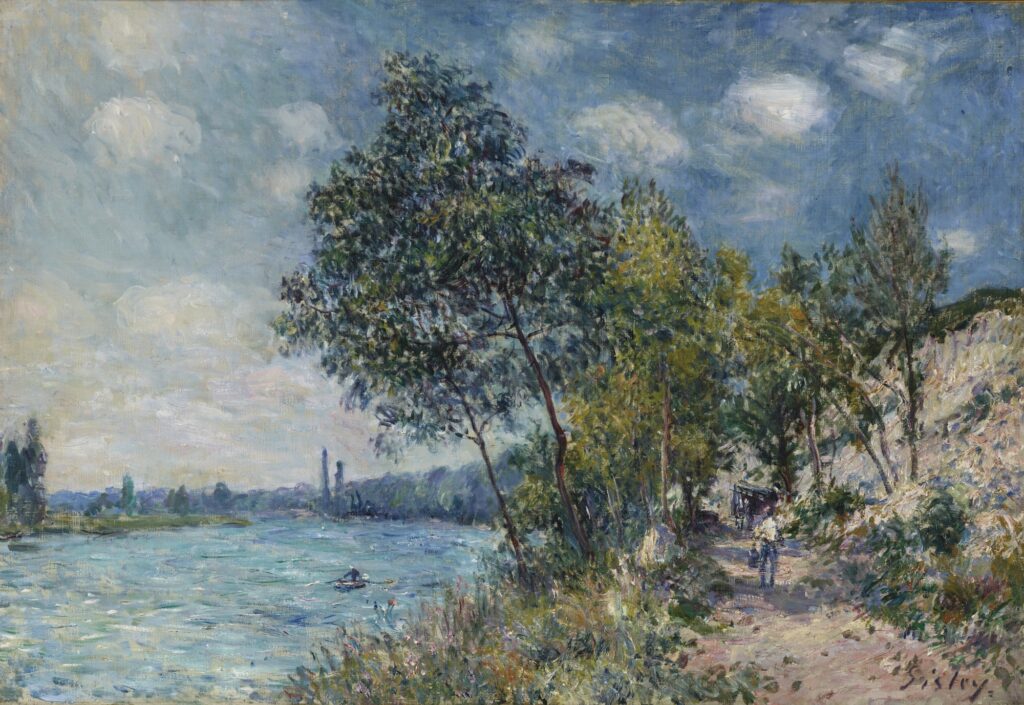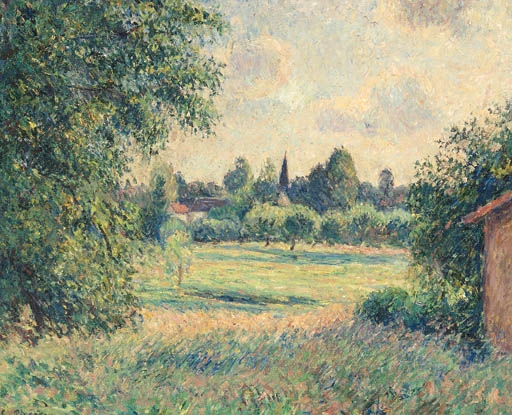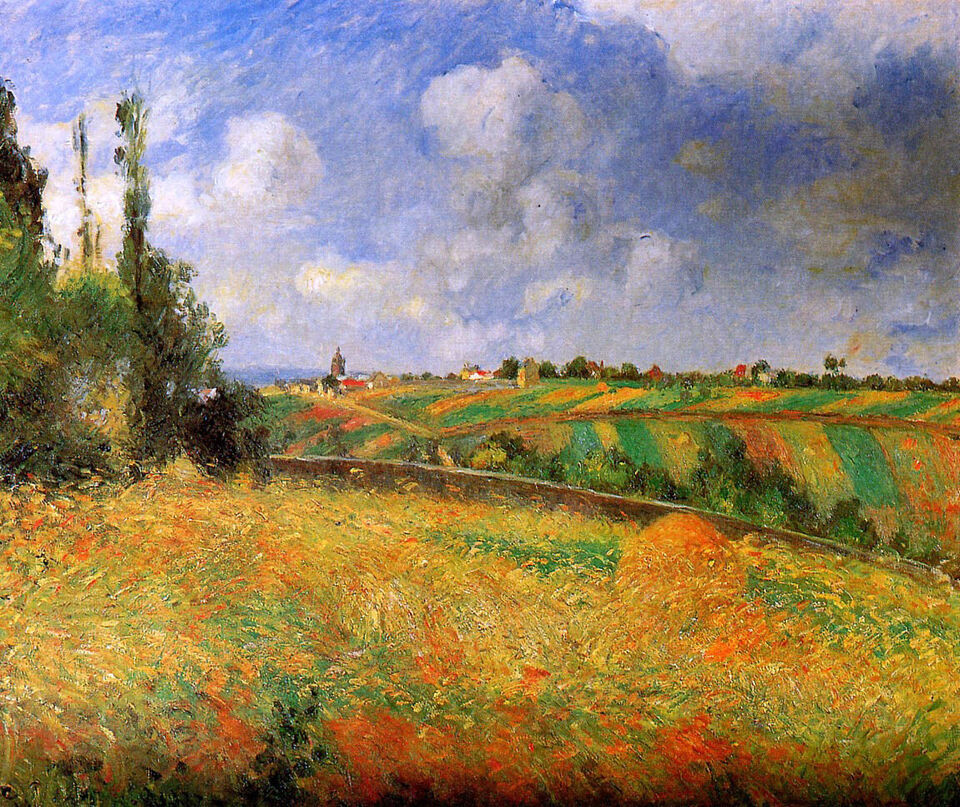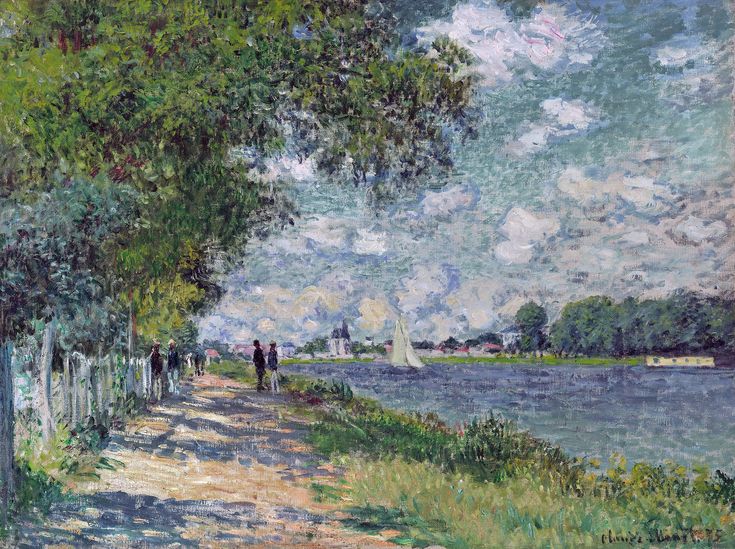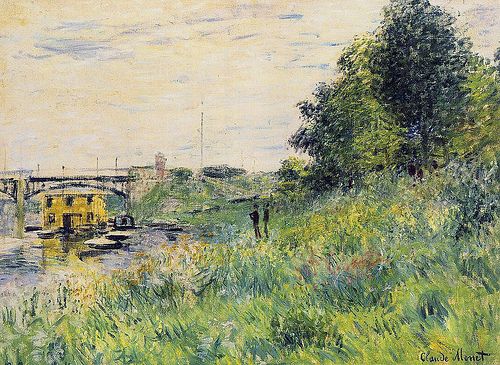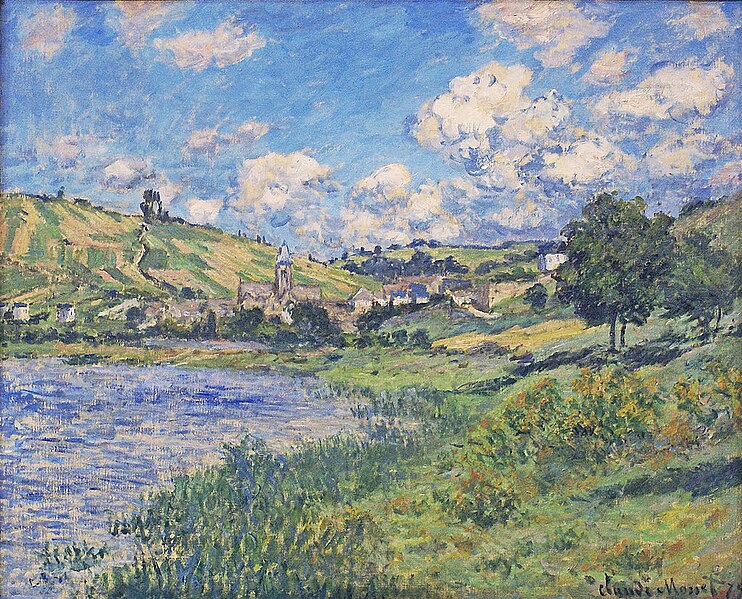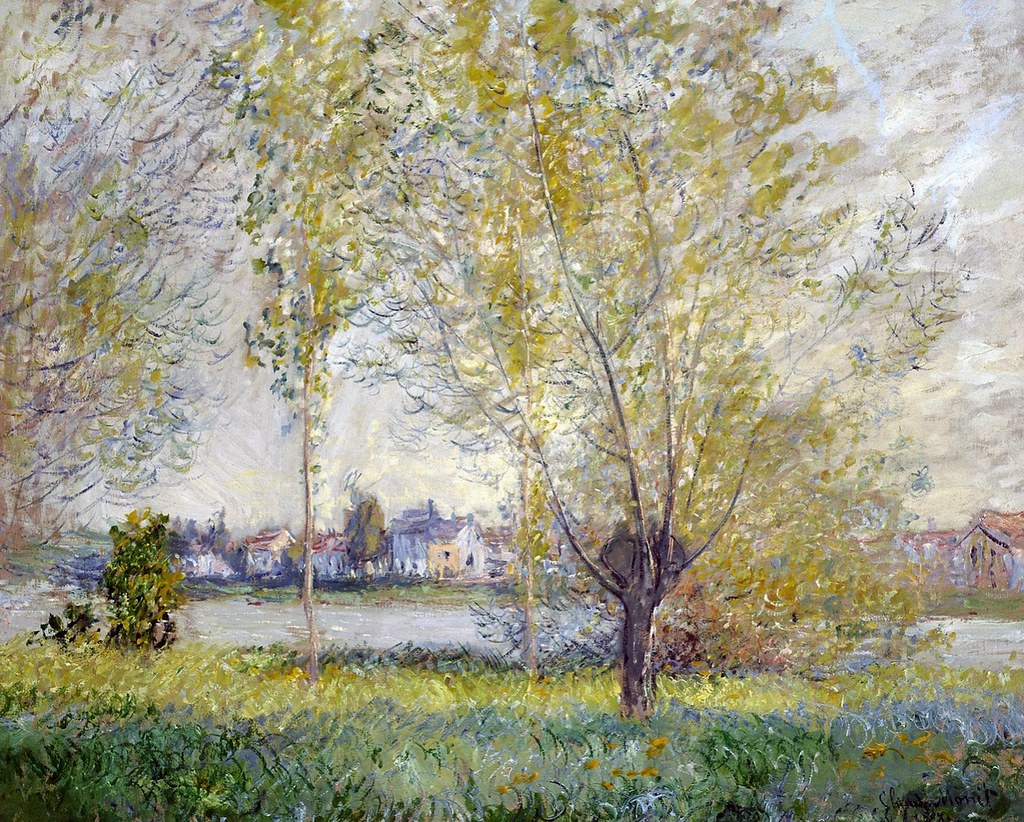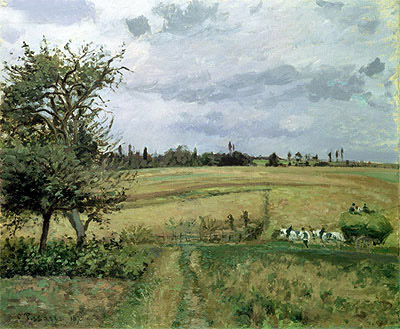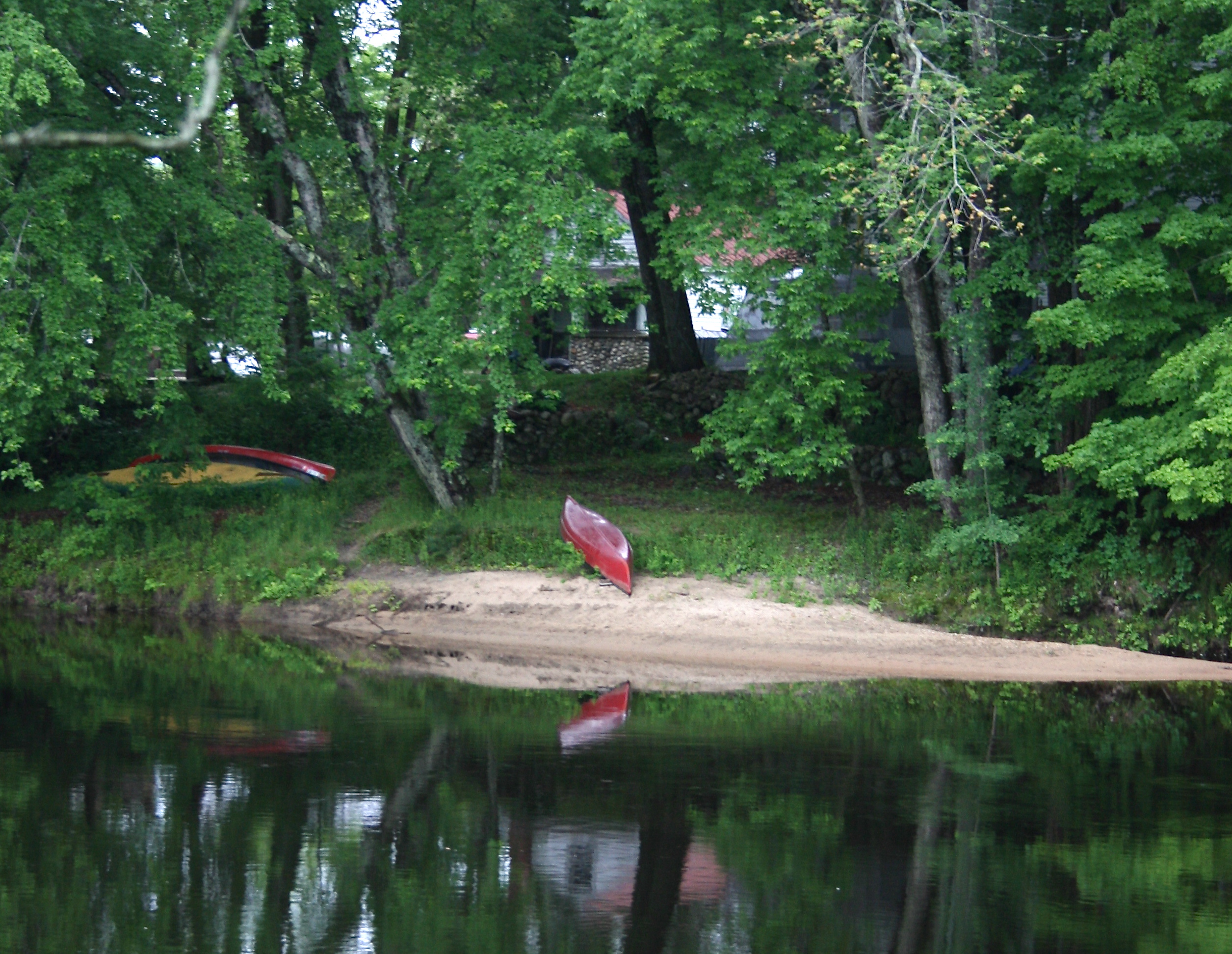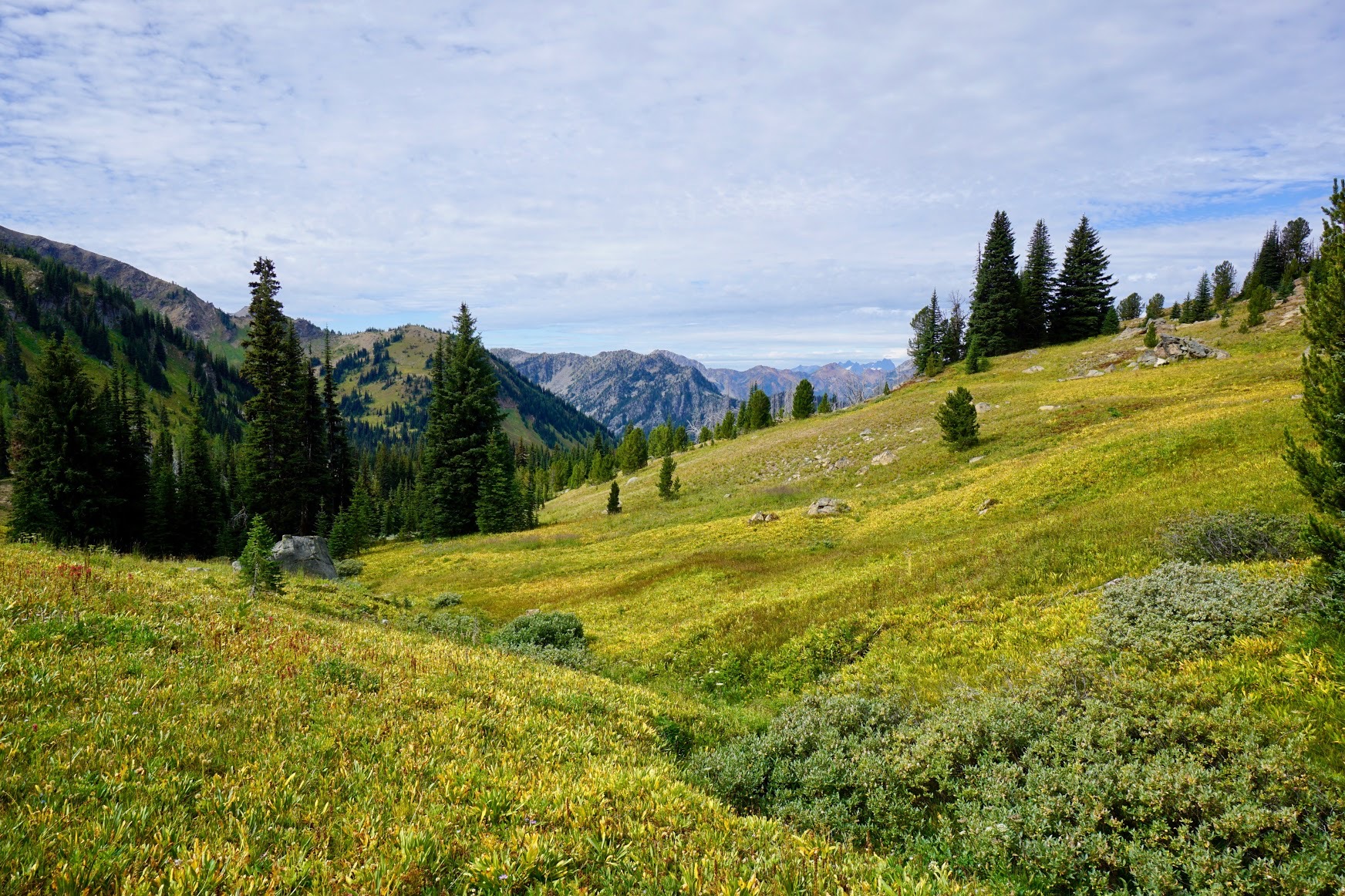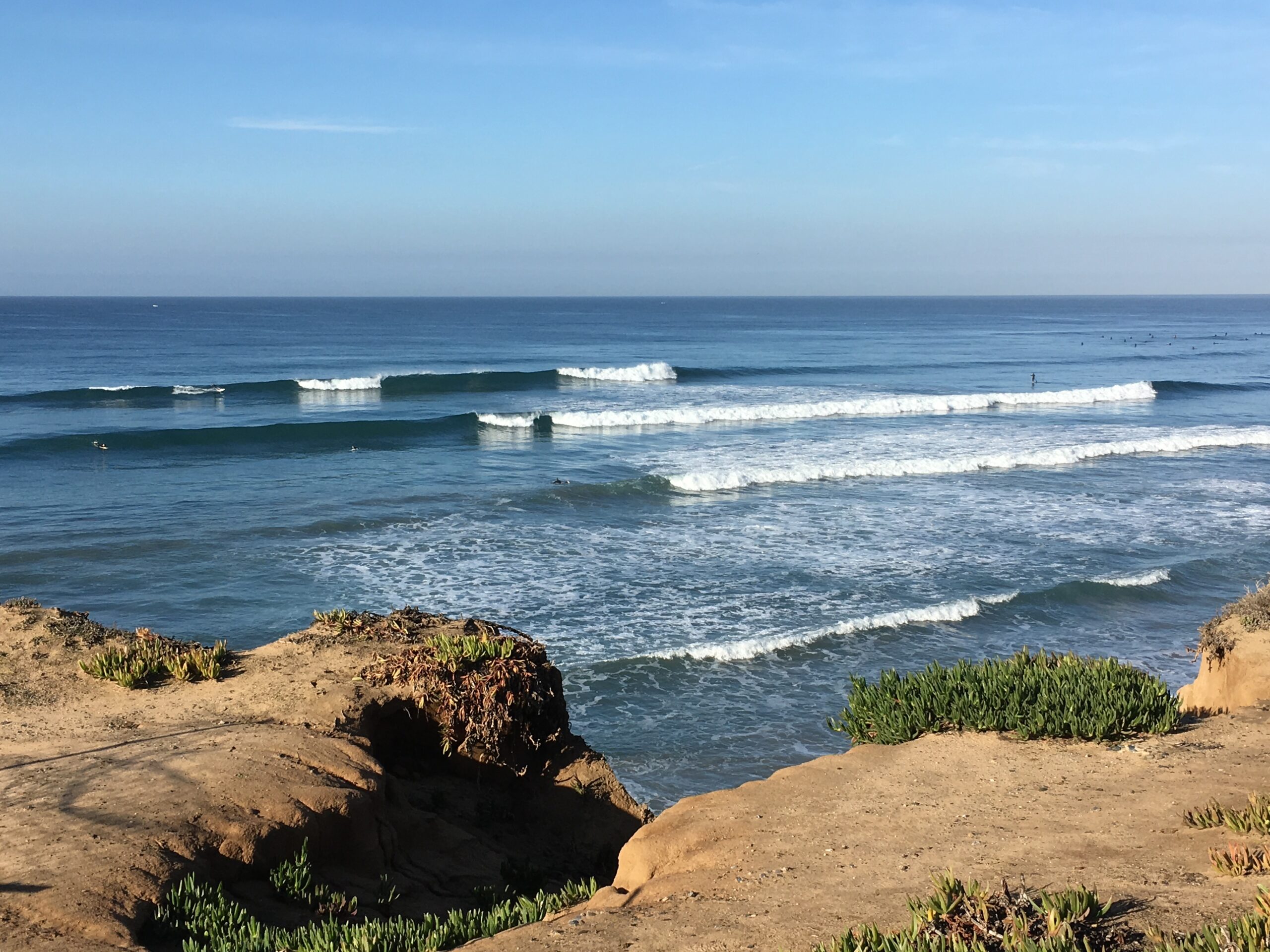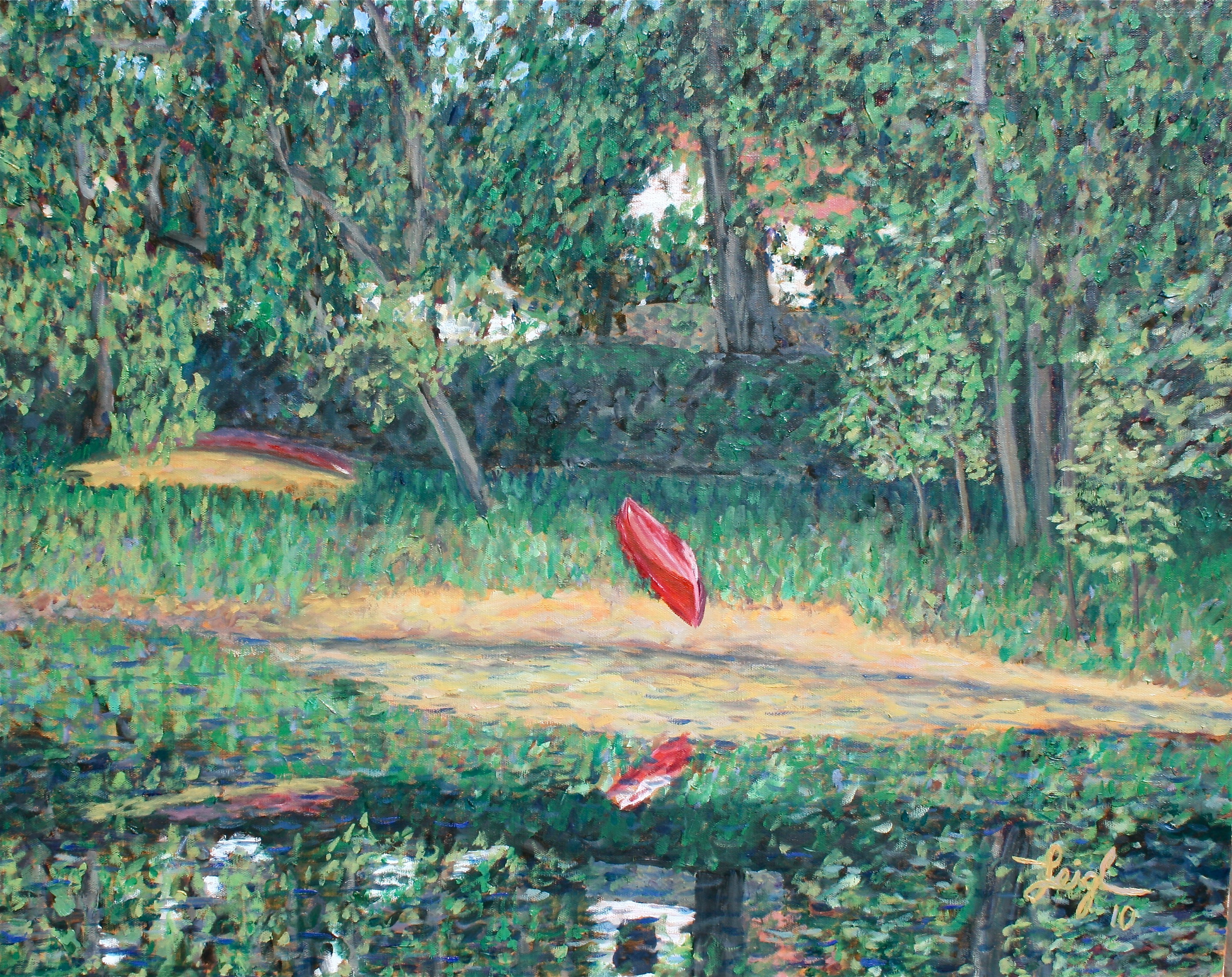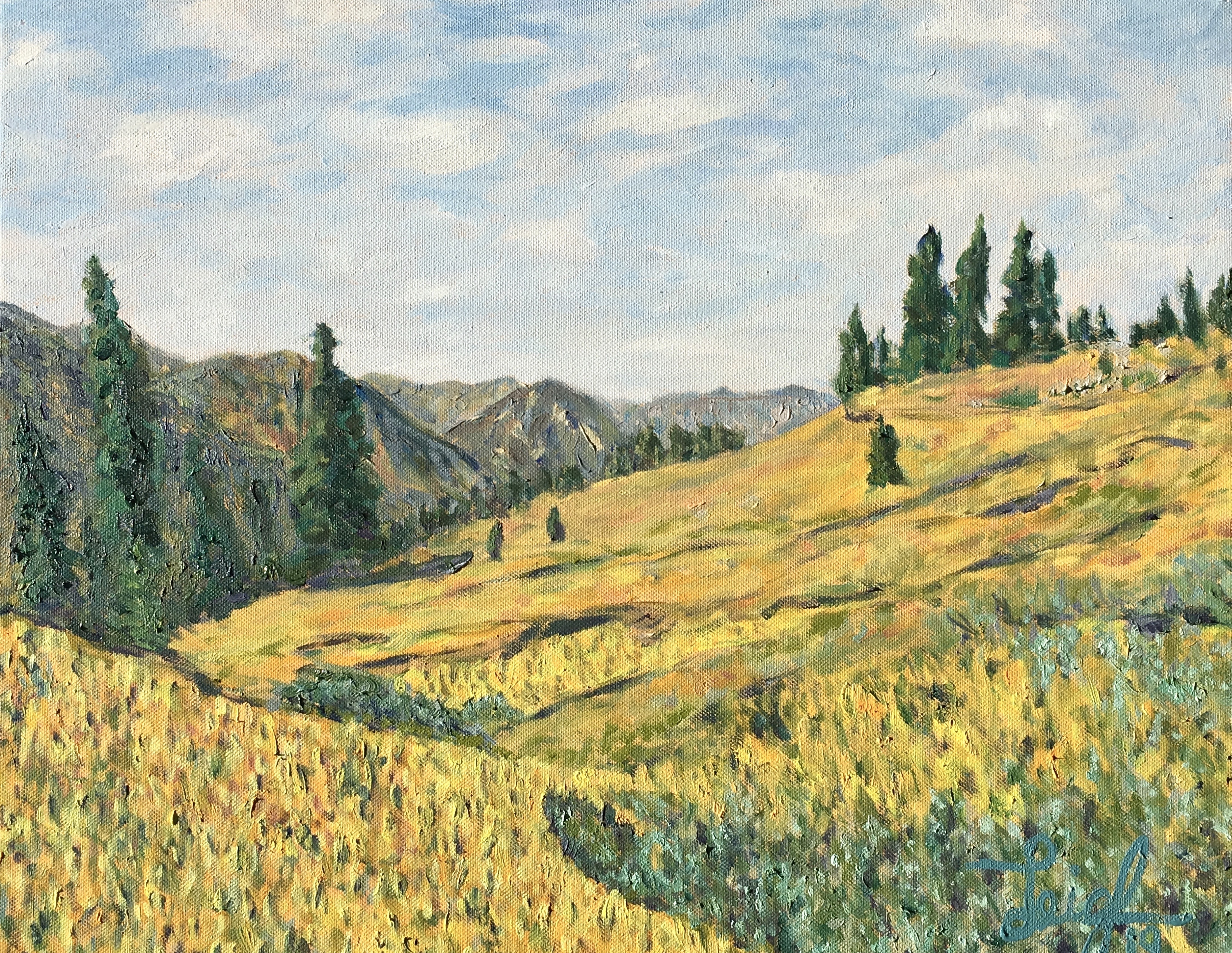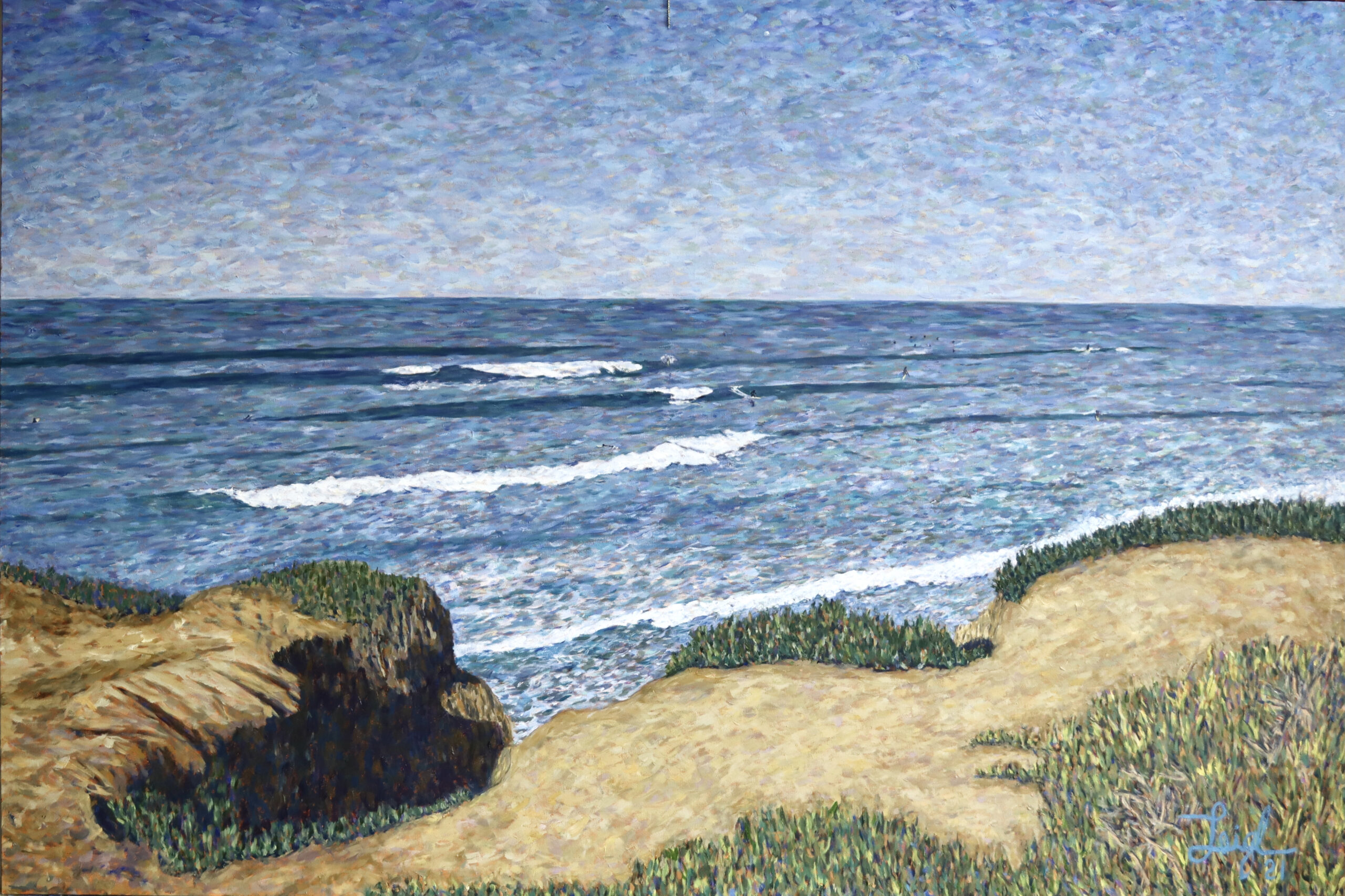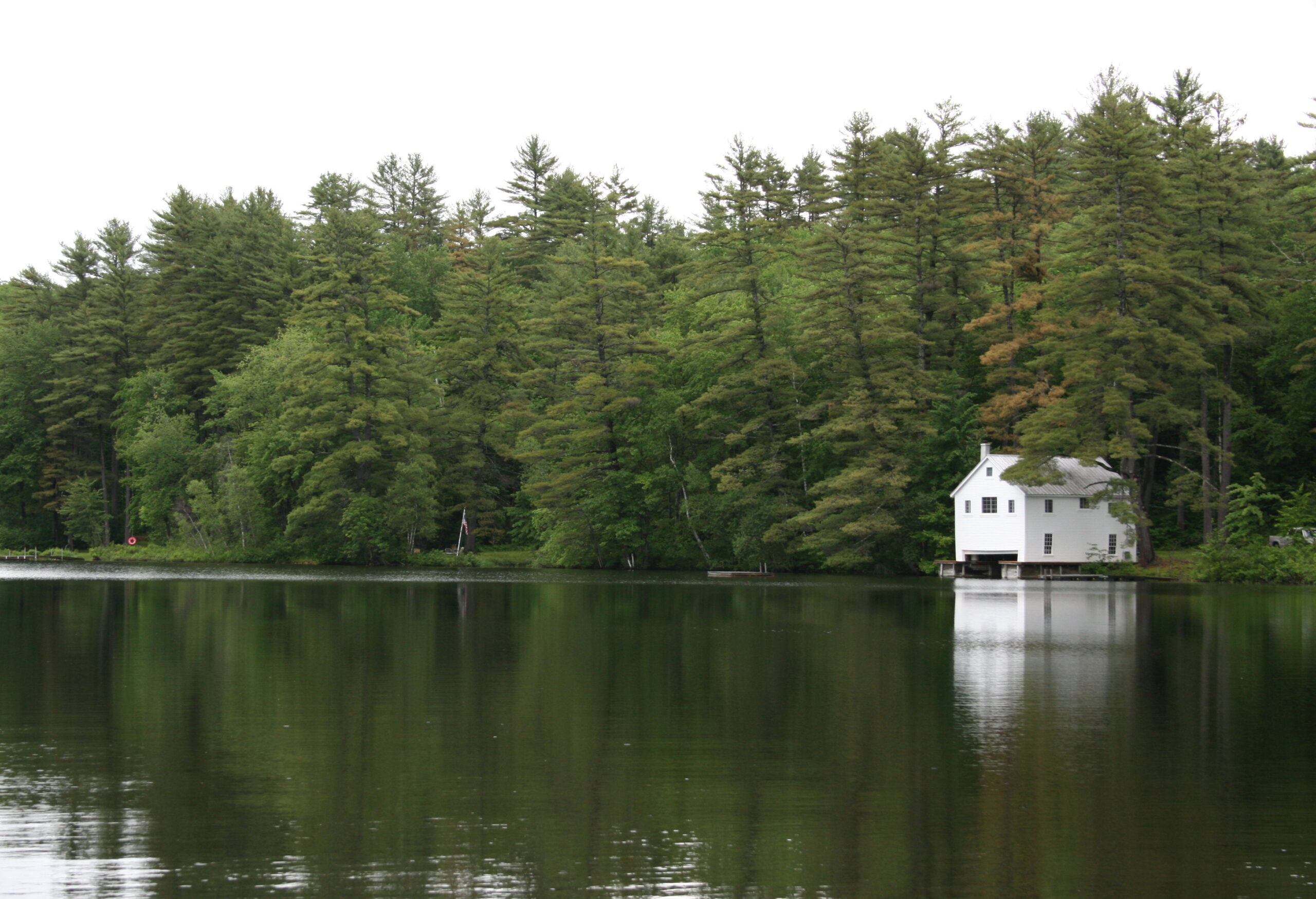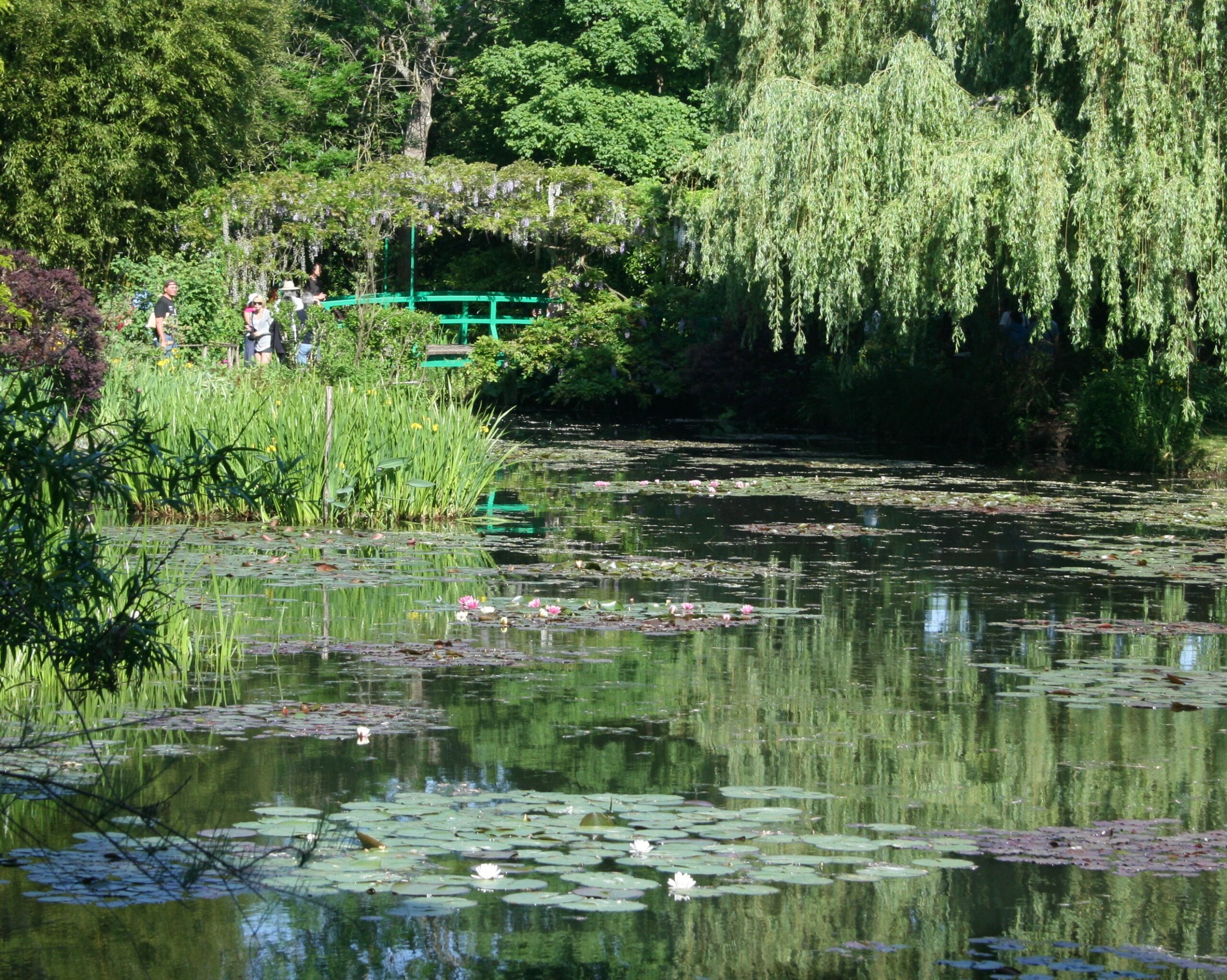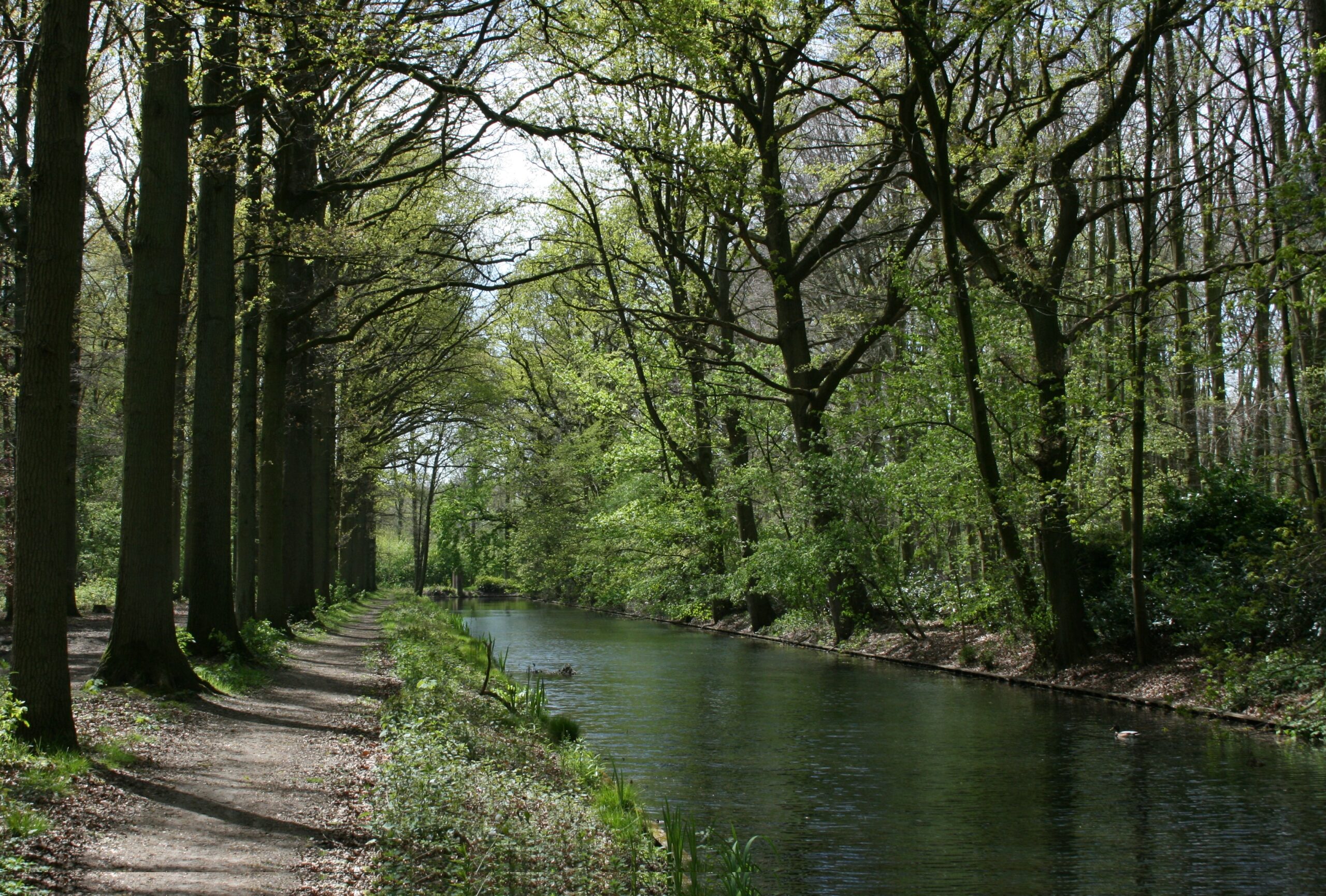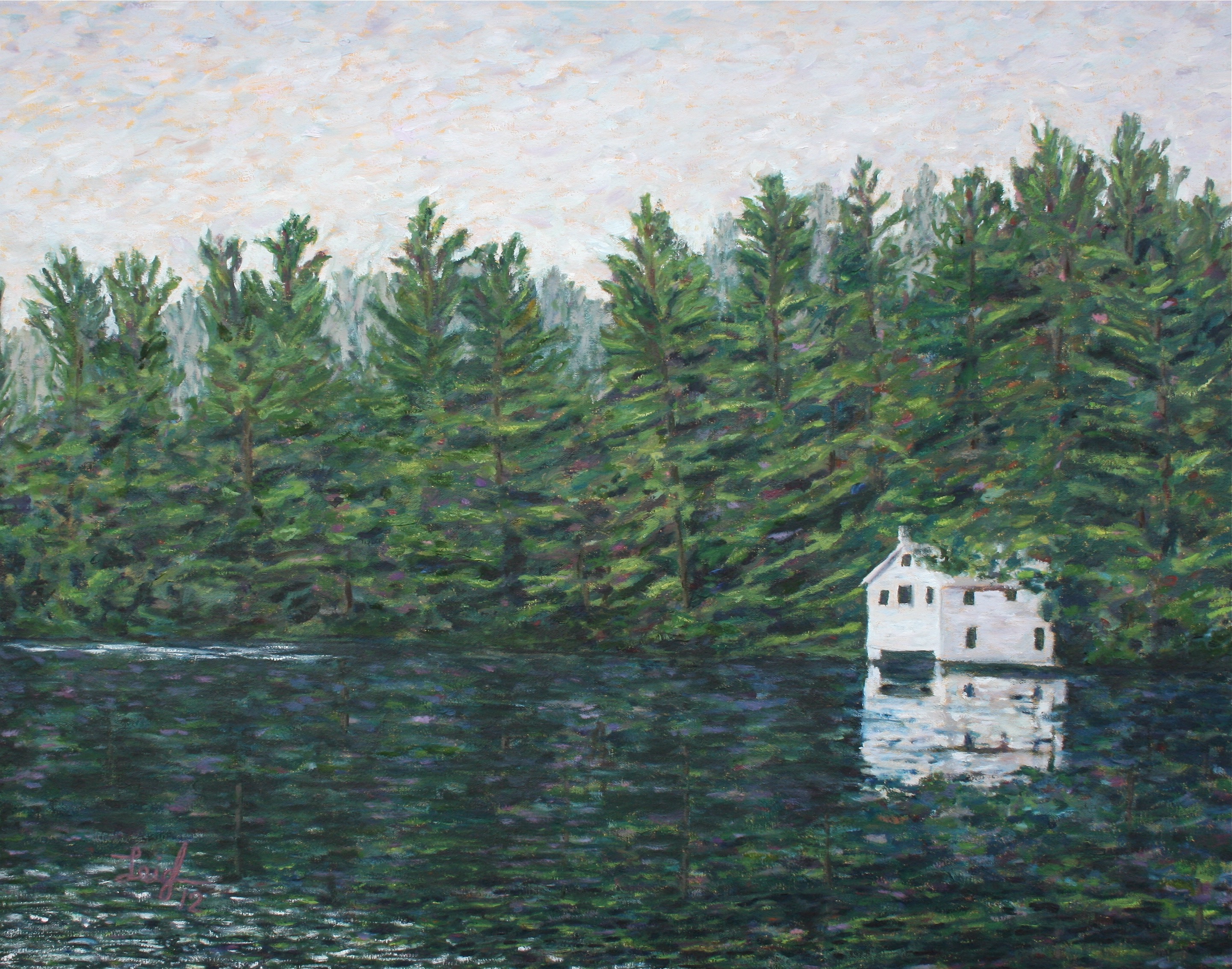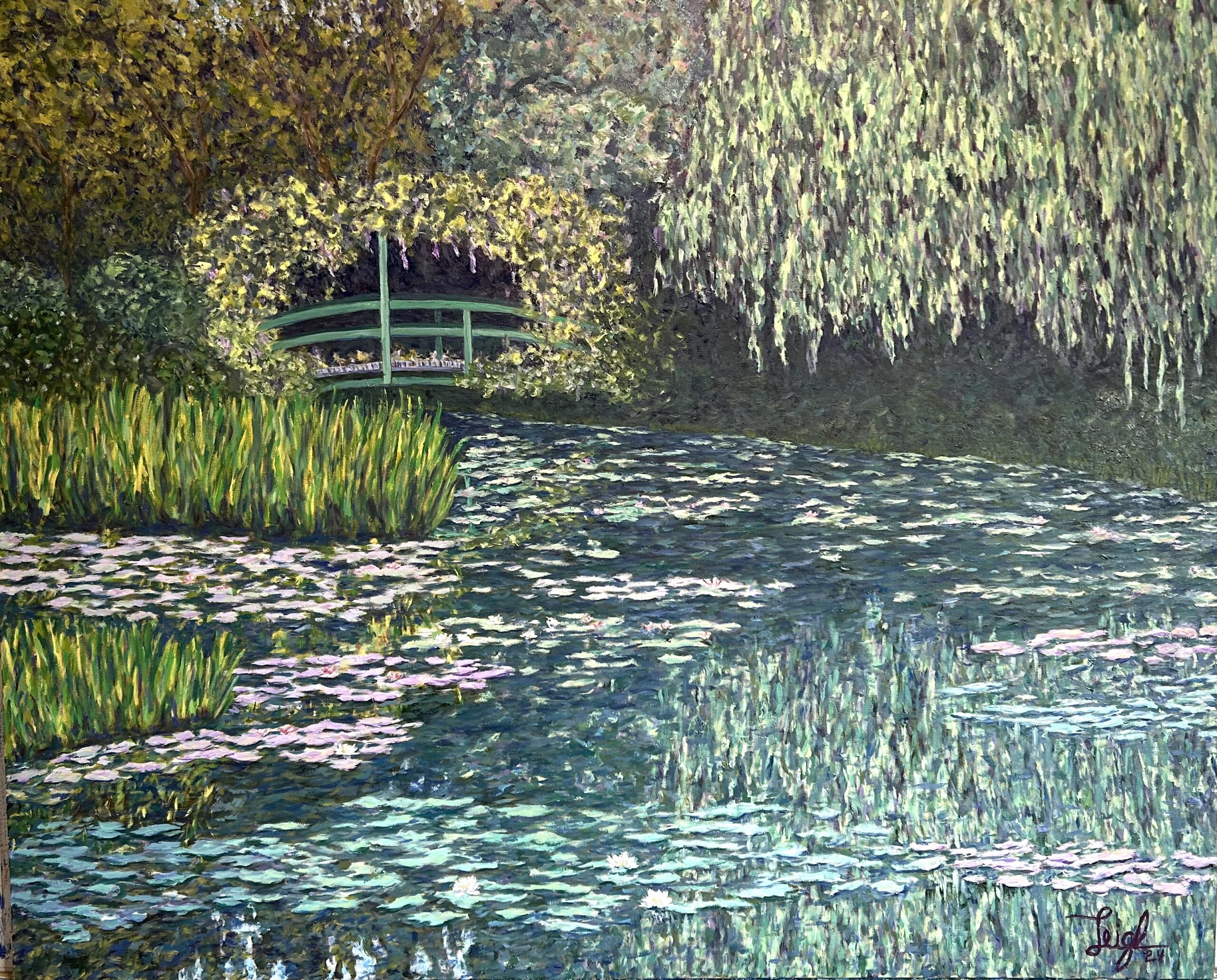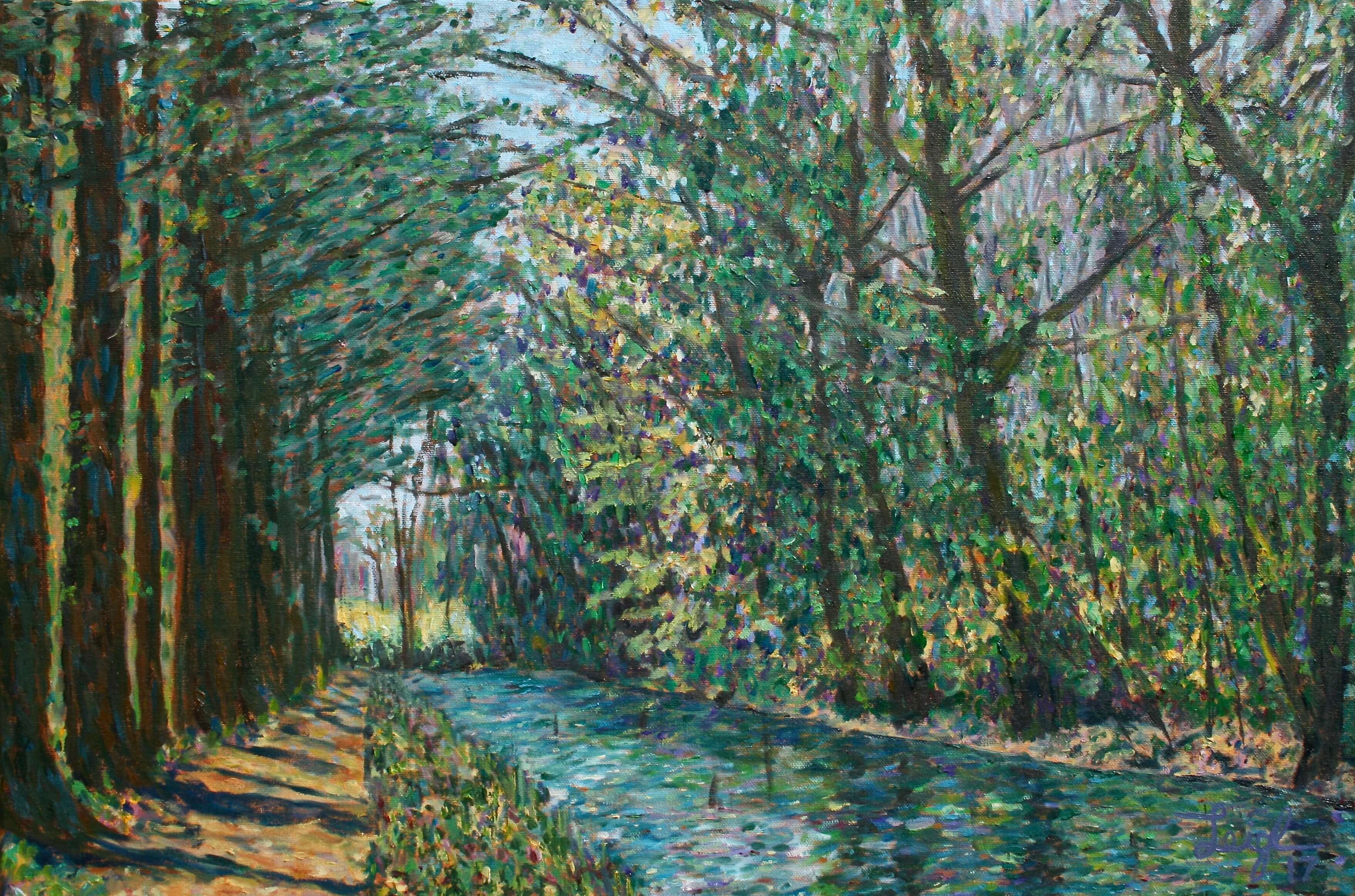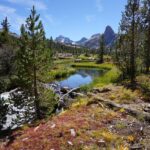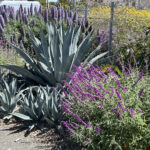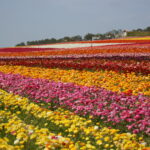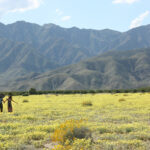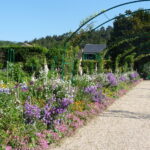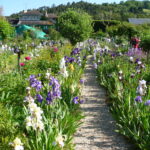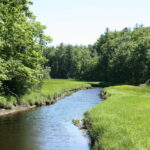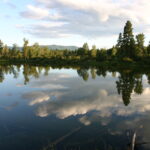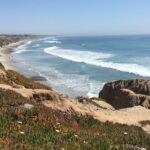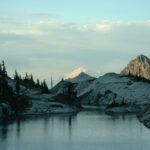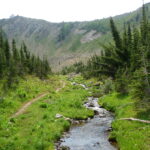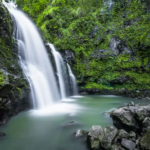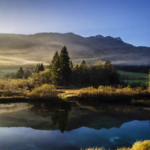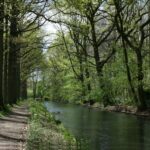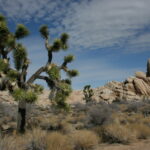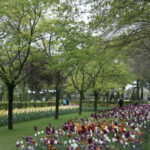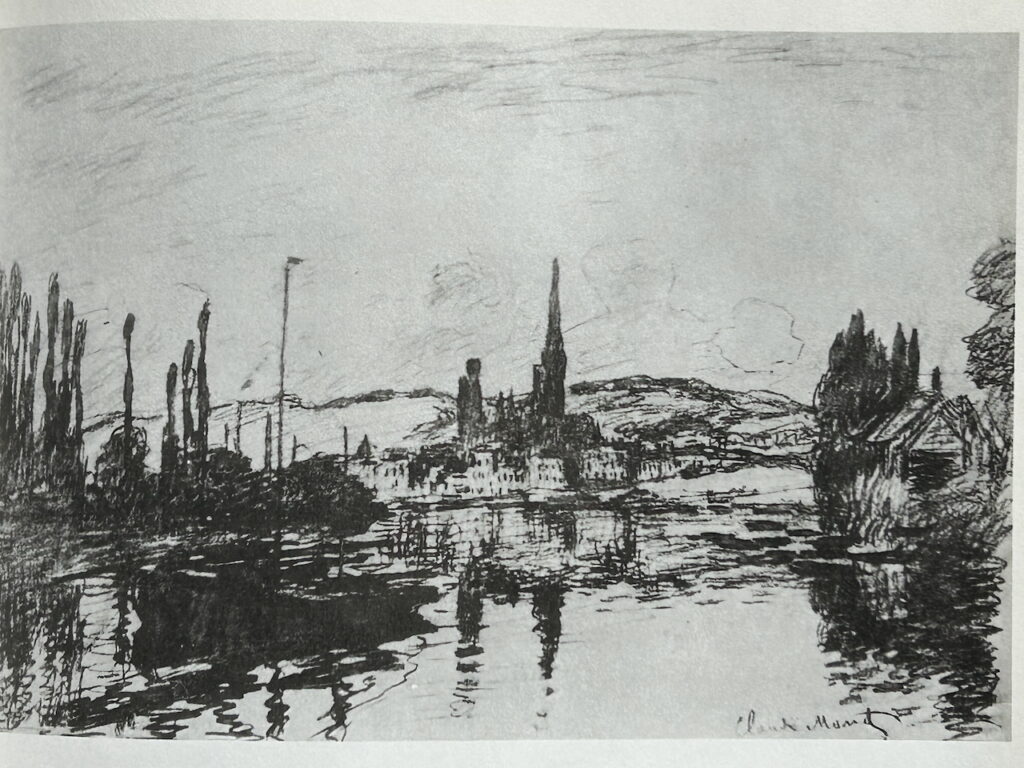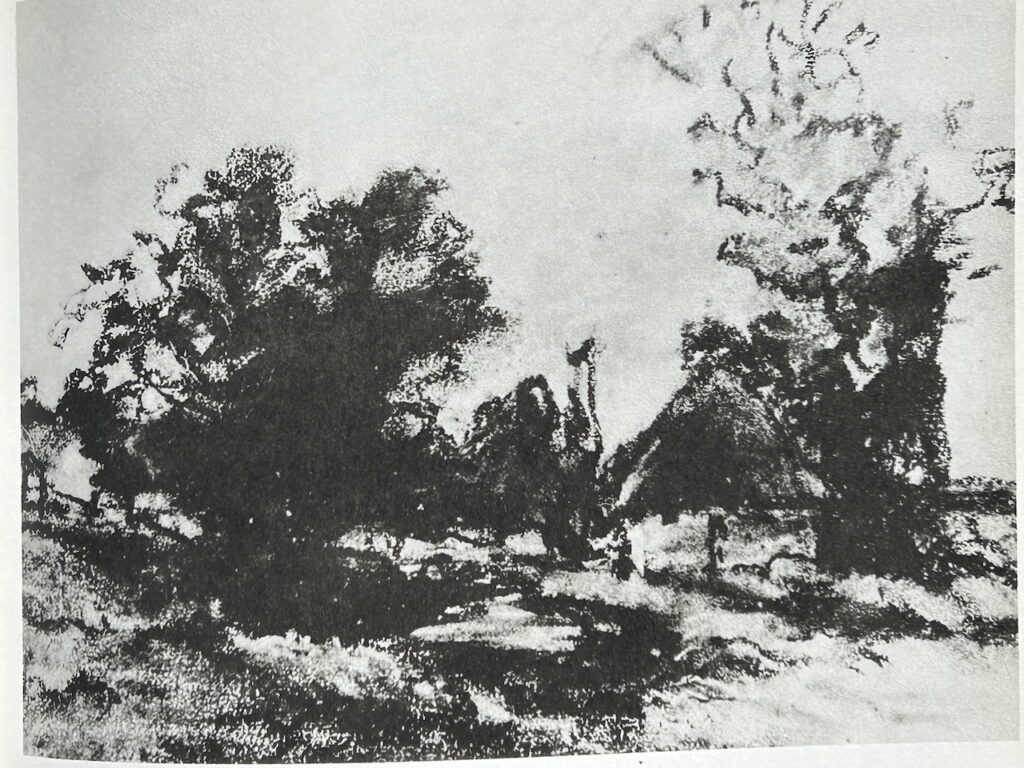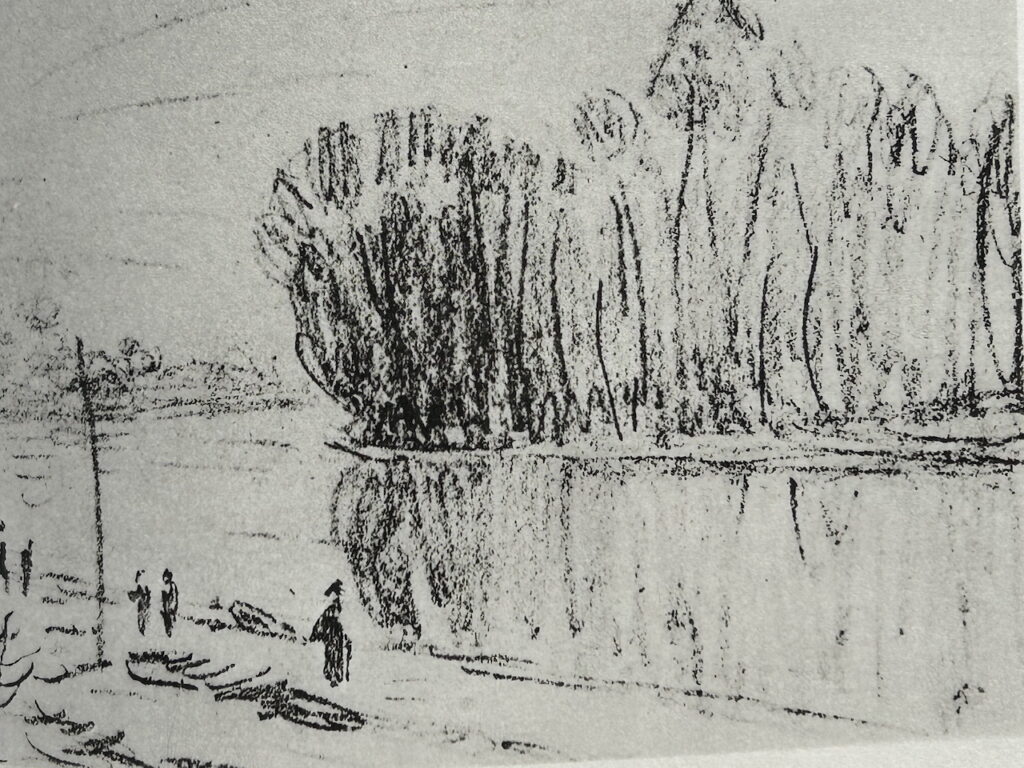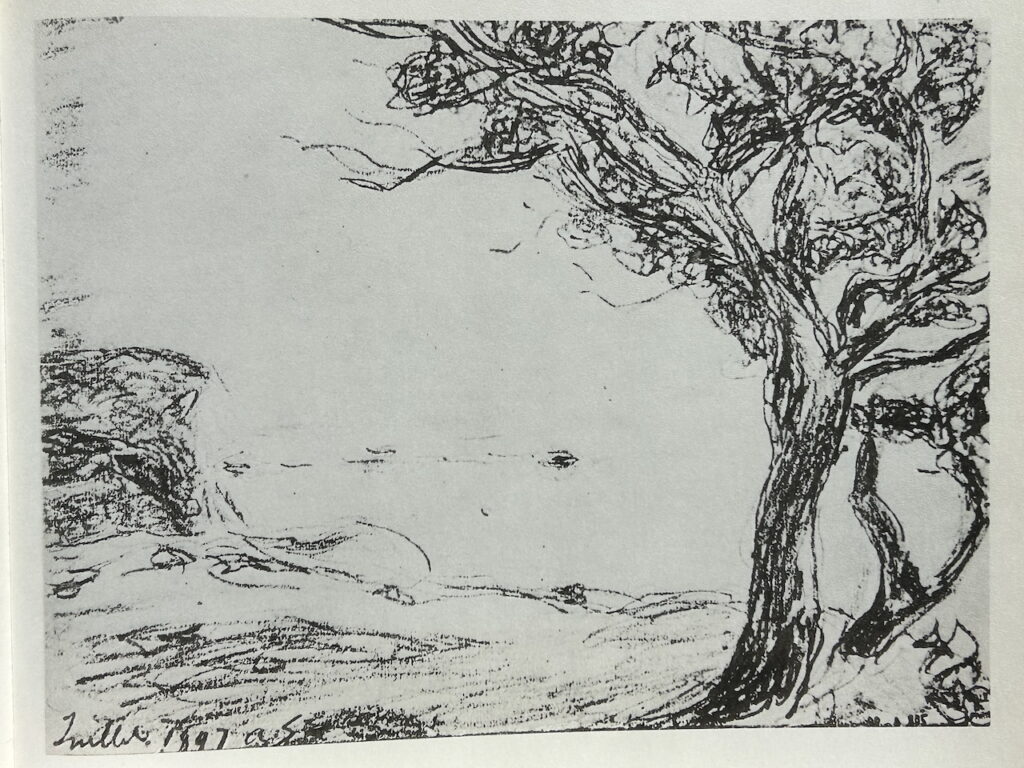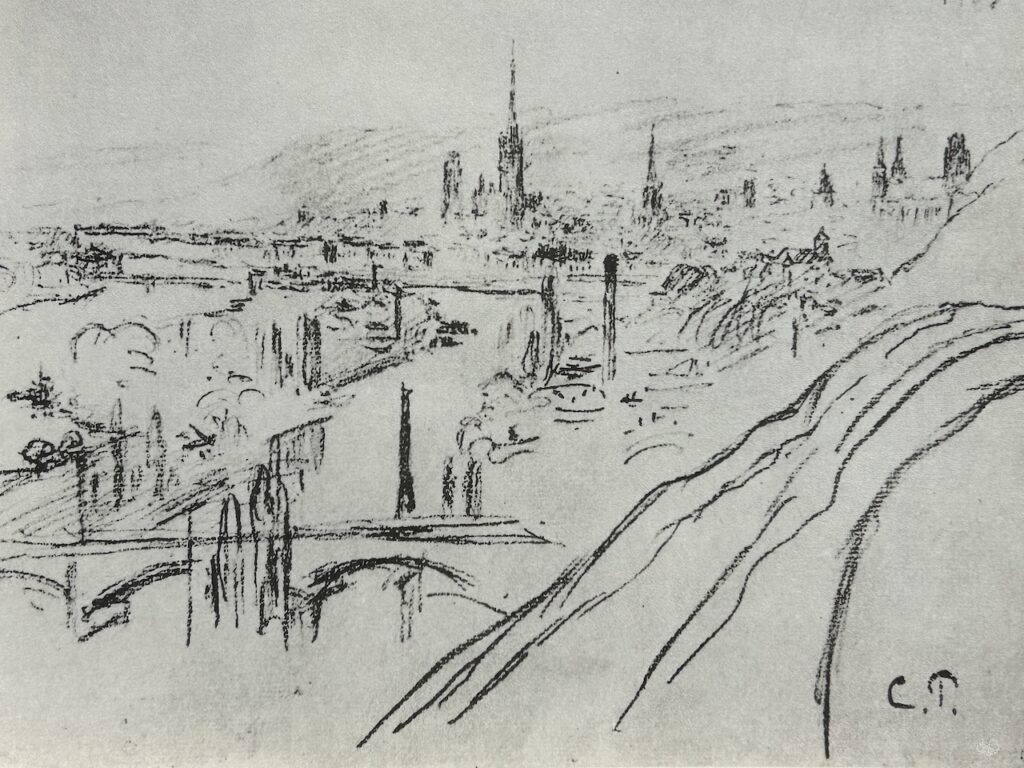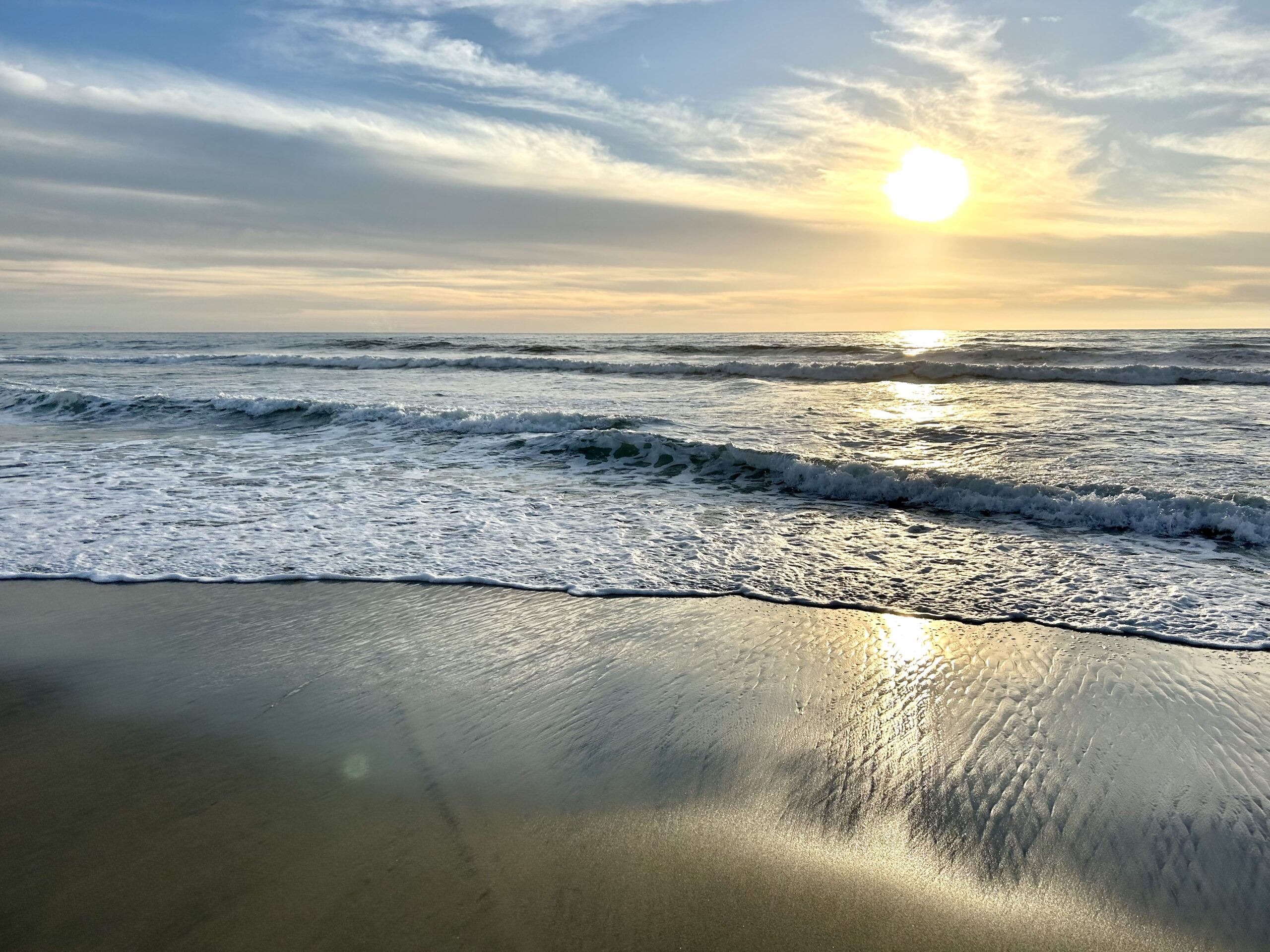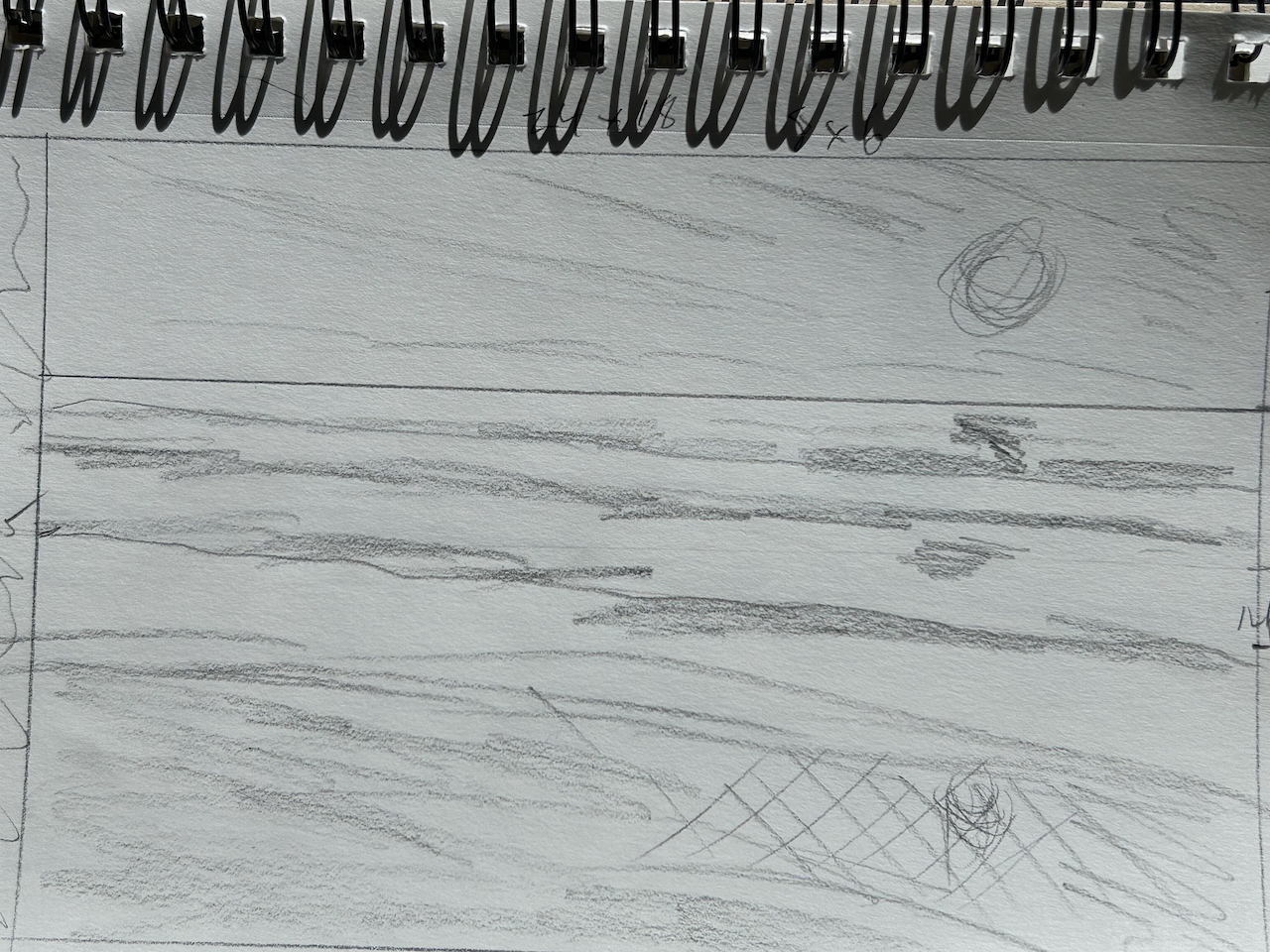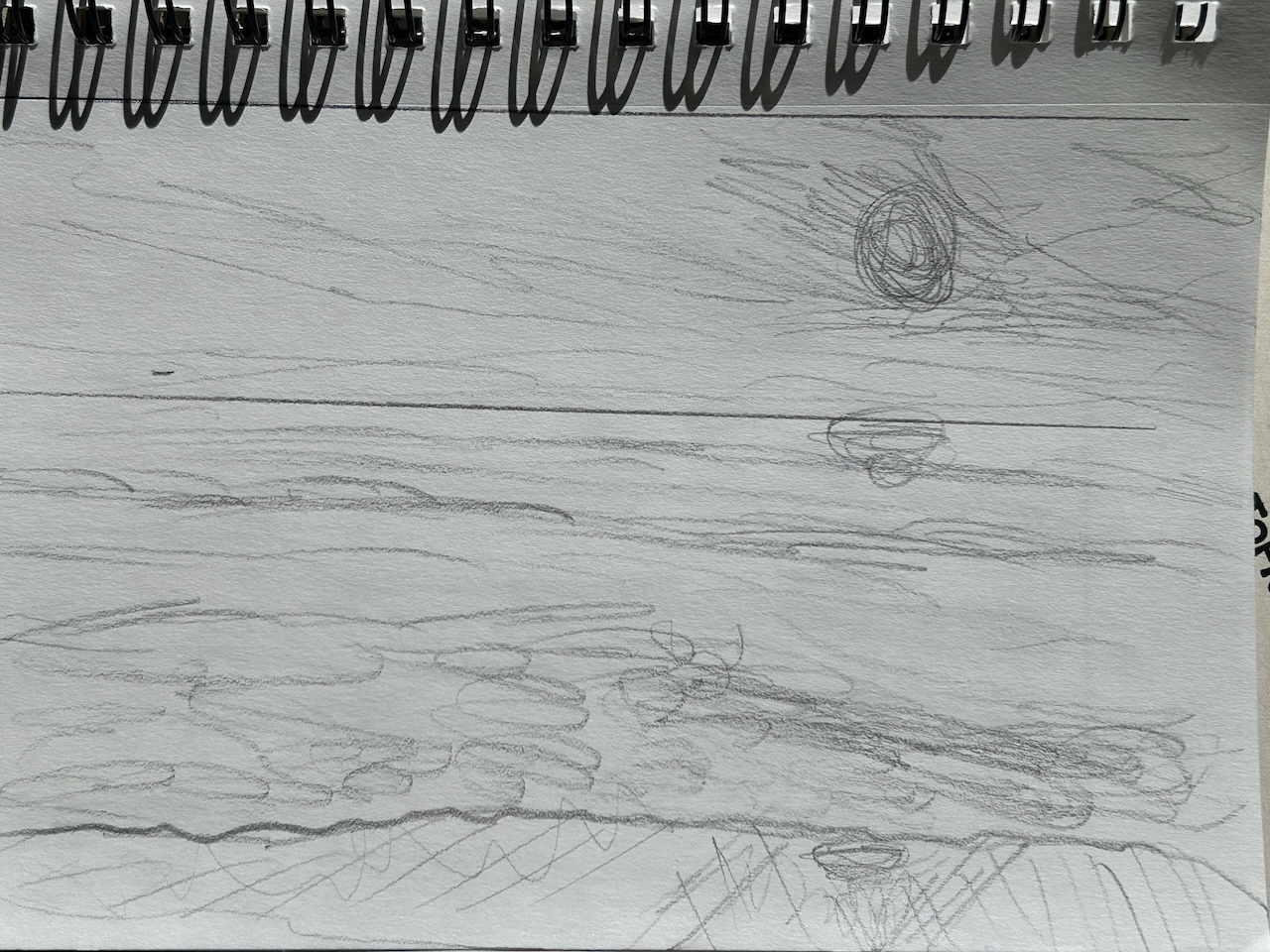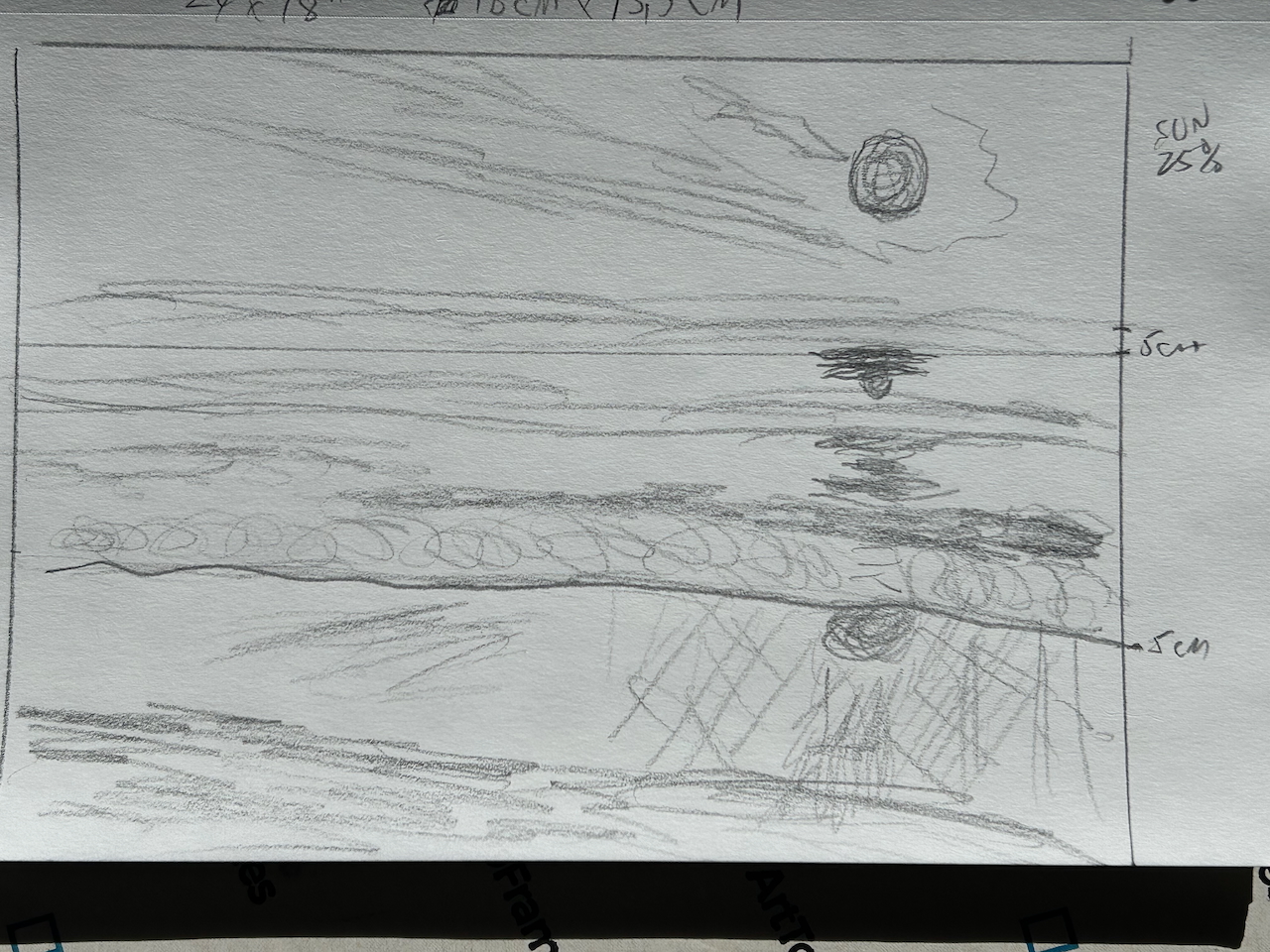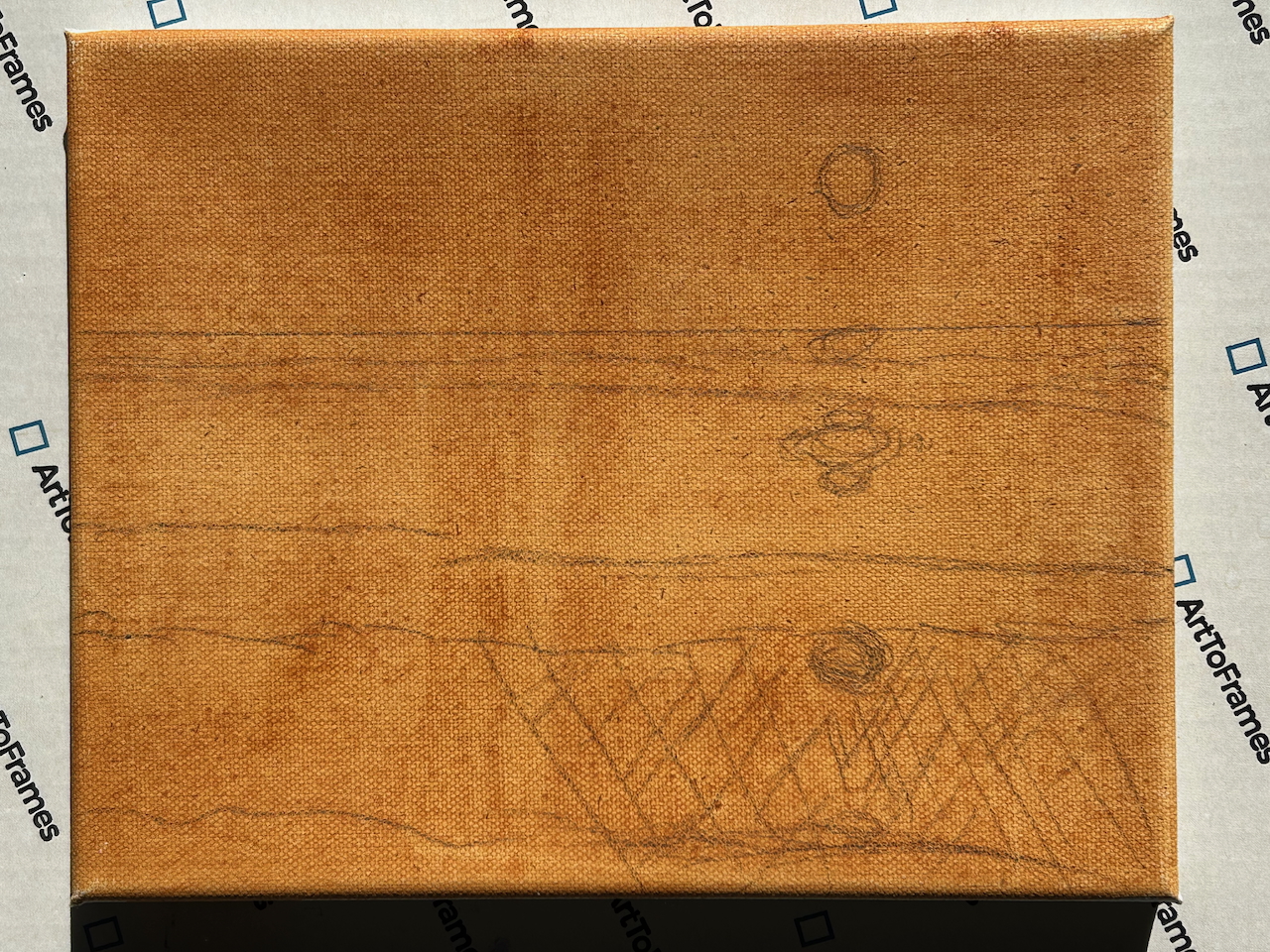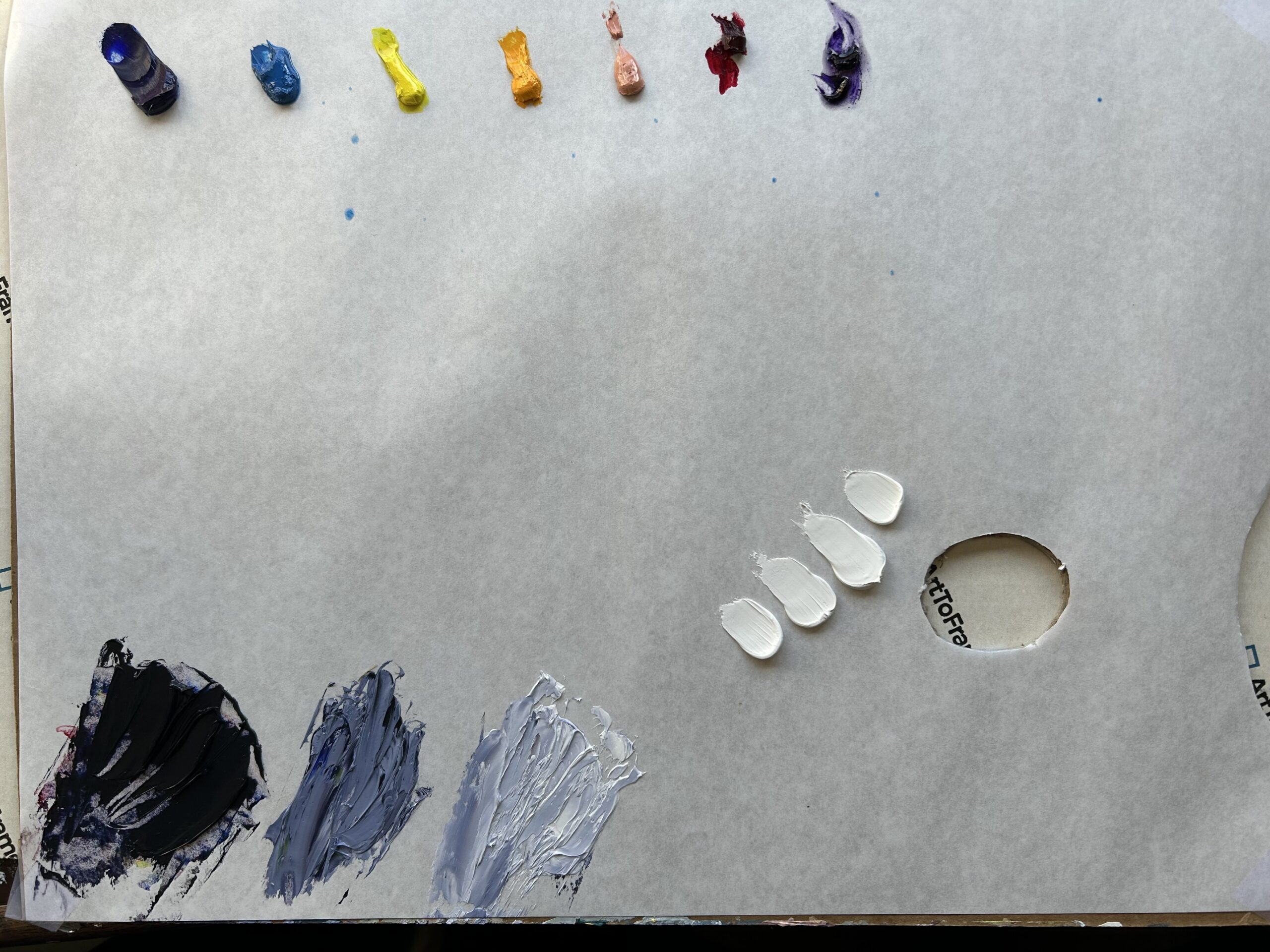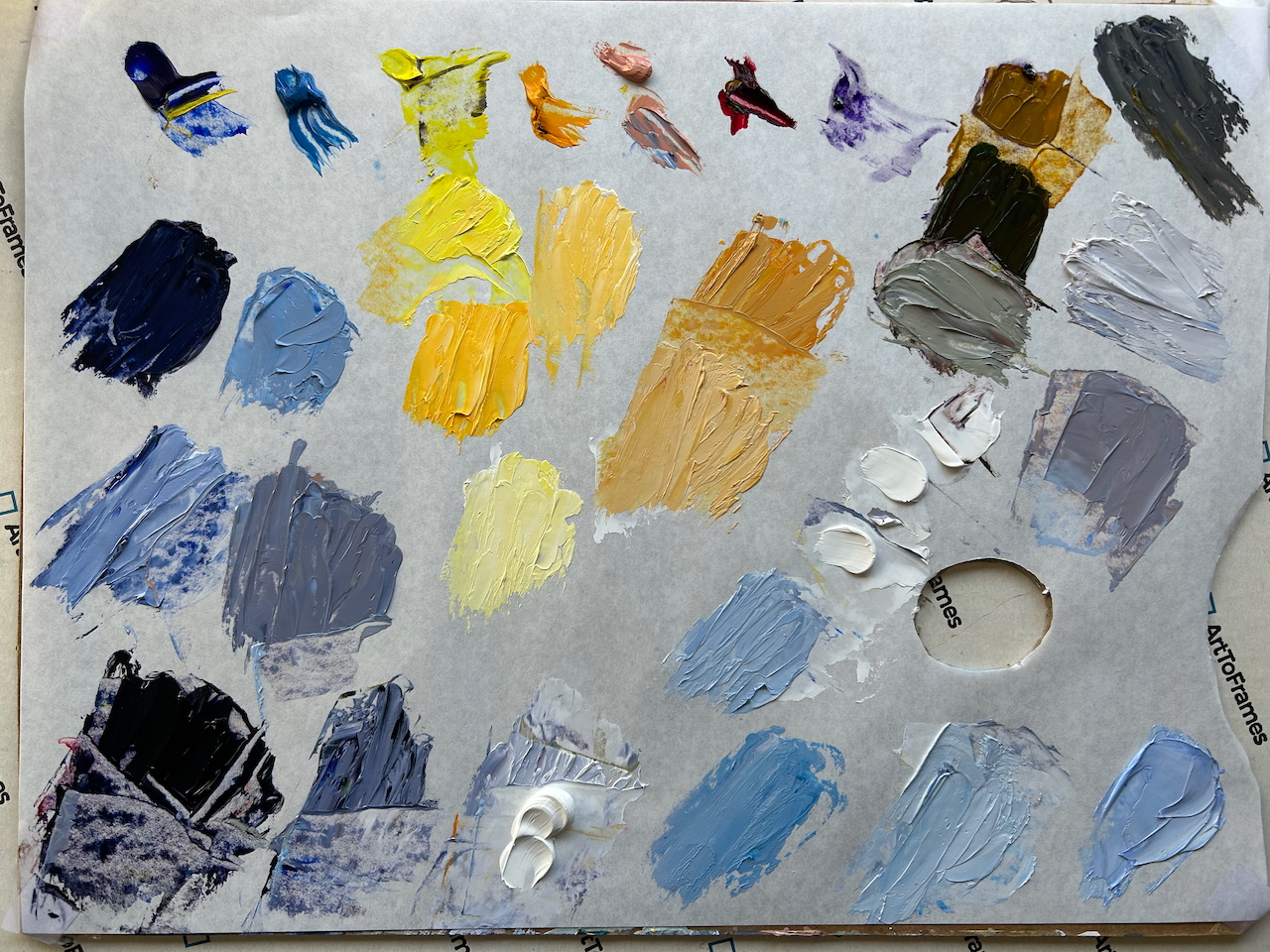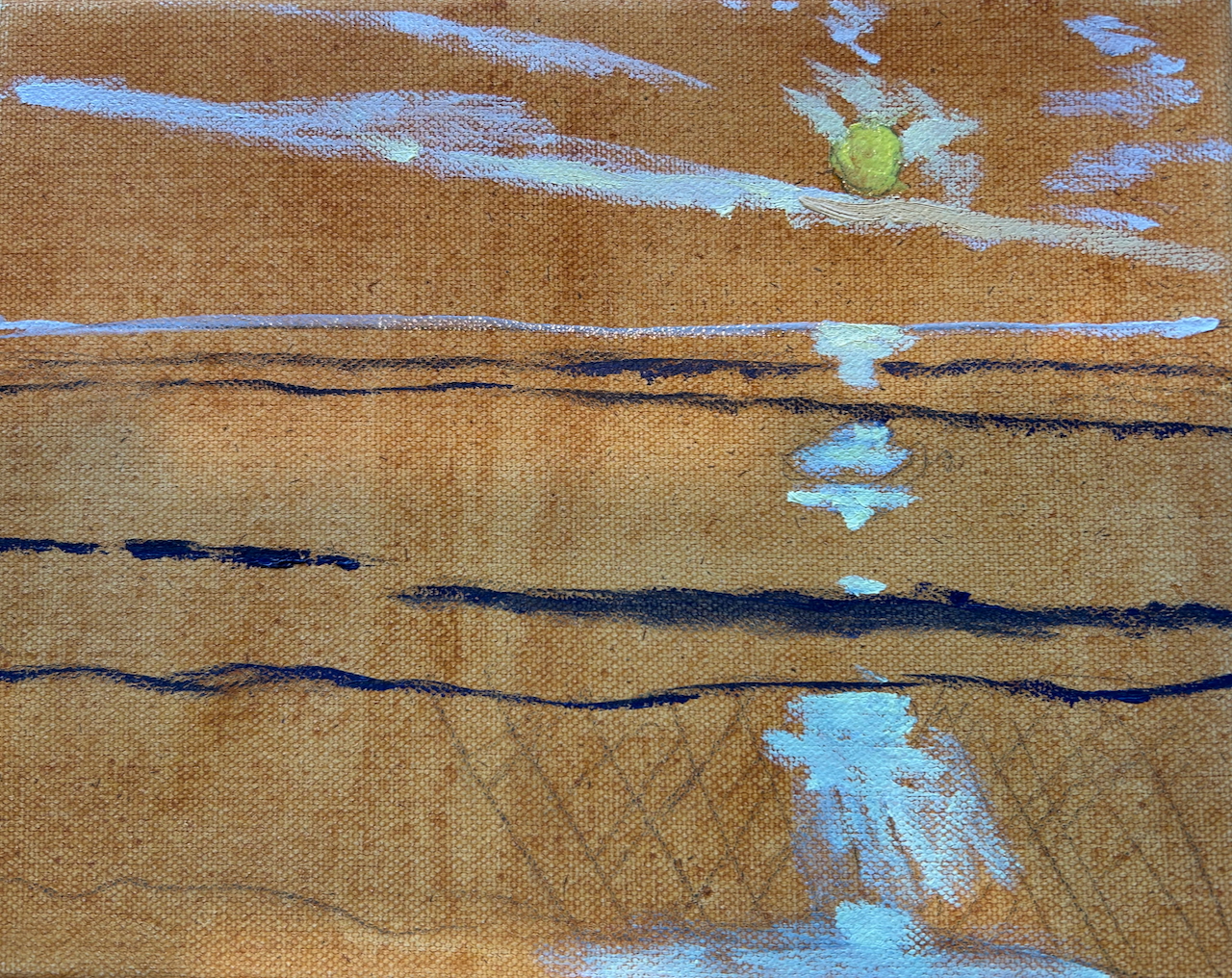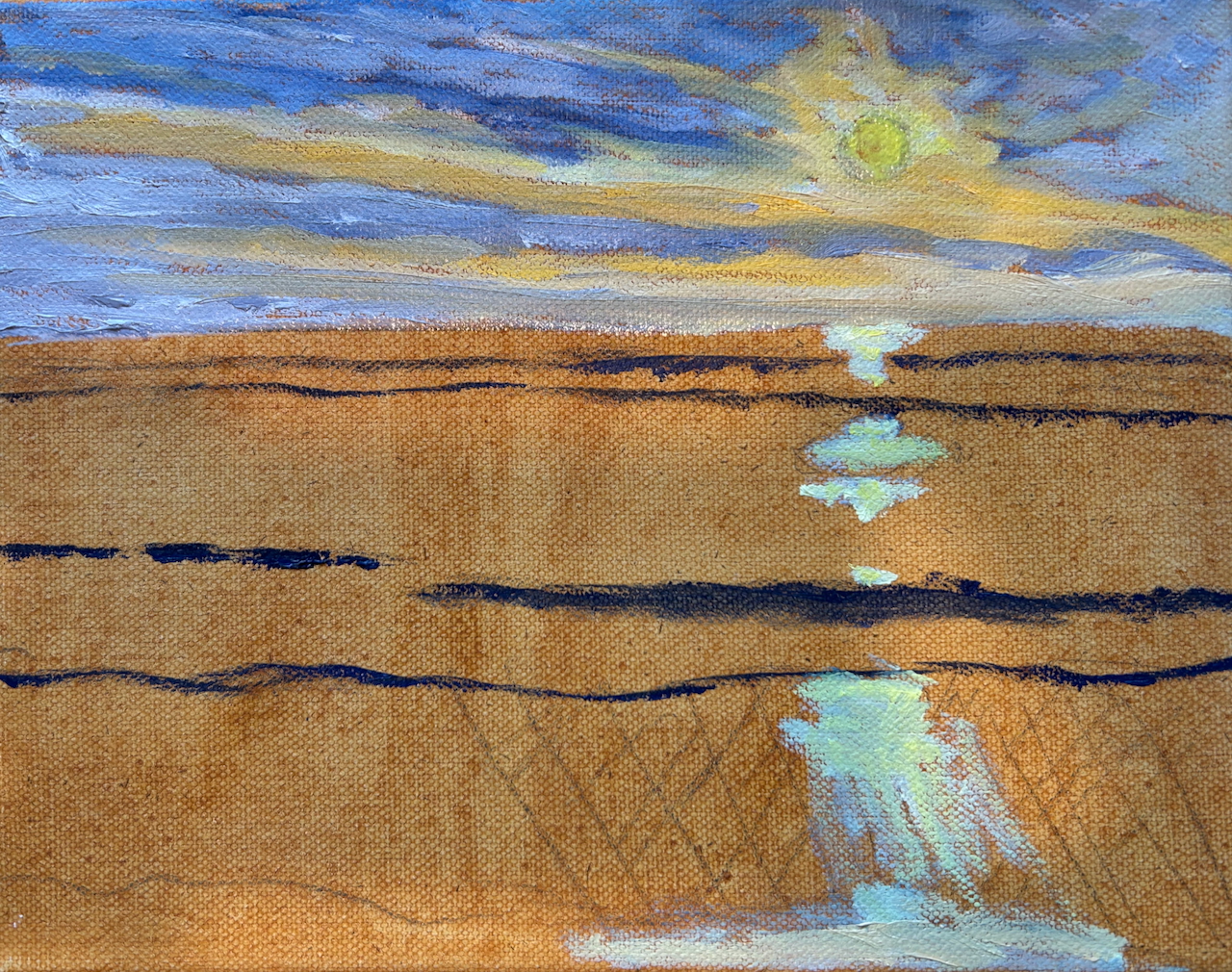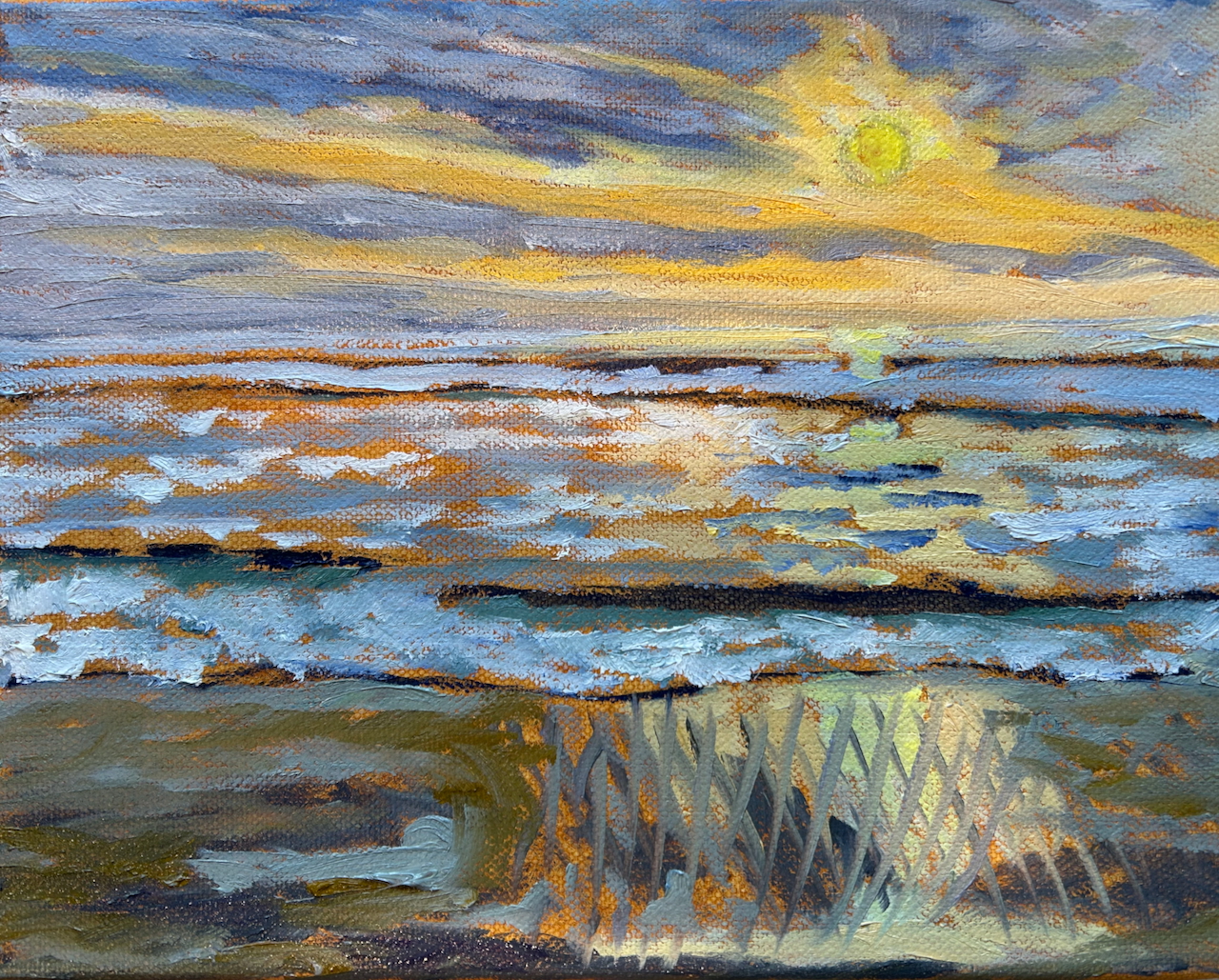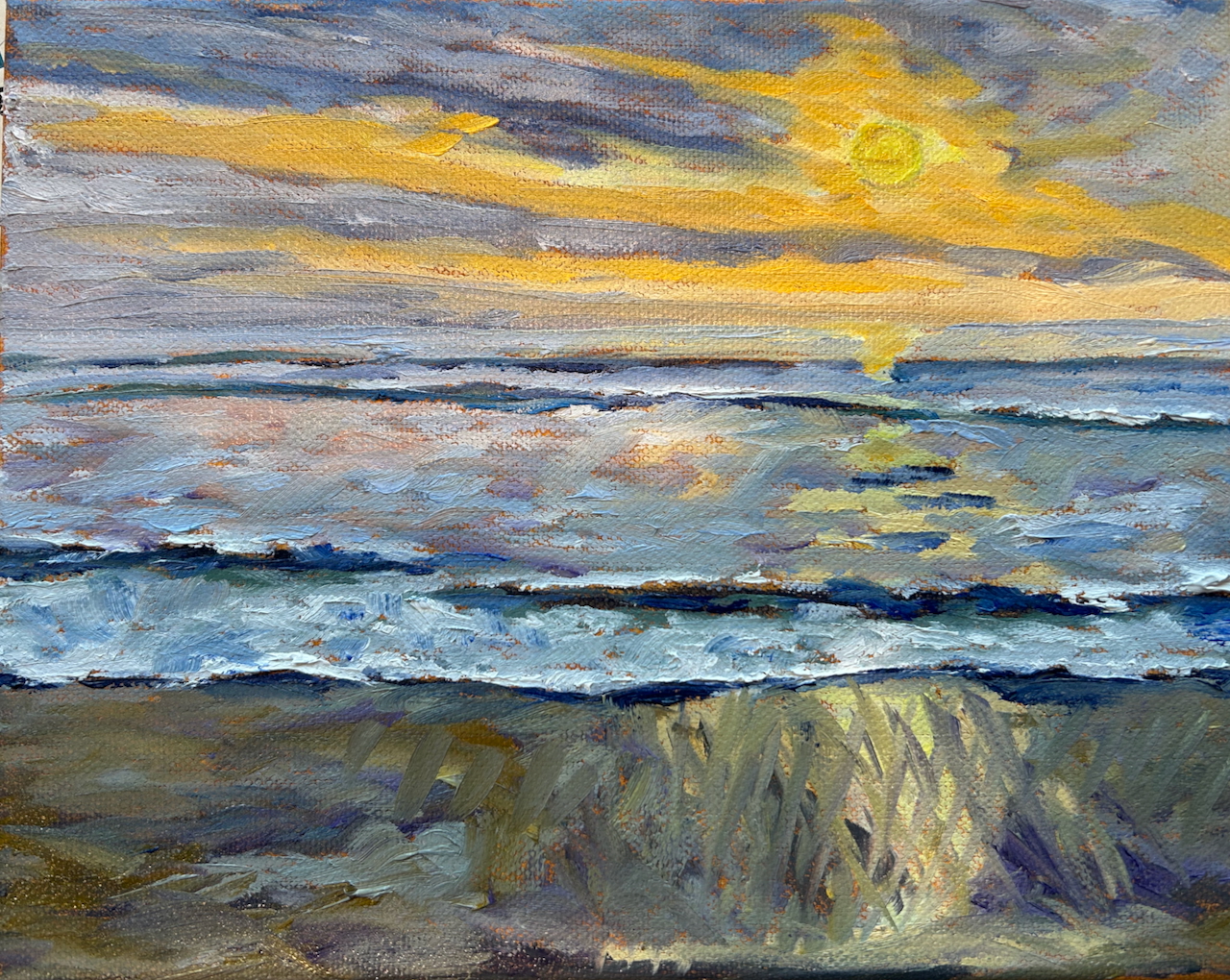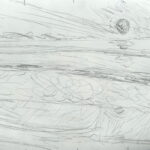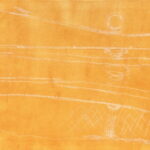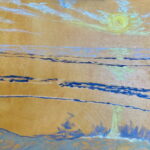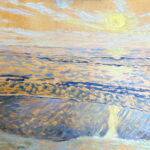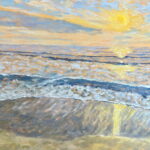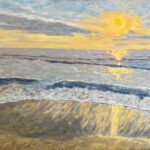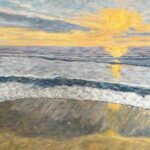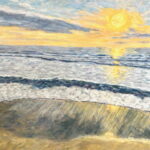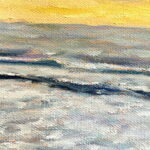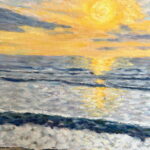Tips for Improving Your Oil Painting Landscapes (class)
Carlsbad Senior Center
Thursdays, February 13 – April 3, 2025
12:30 – 2:30 – Auditorium
This class will offer techniques for painting landscapes faster, looser, and with more confidence. We will practice color mixing and explore different color hues, creating useful charts for future reference. A small canvas will be completed in one class with quick-painting methods; and, a larger canvas of the same landscape will be painted in 4-5 sessions. Everyone will select their own landscape scene to paint (sample images will be available). Although intended for participants of the instructor’s previous classes, it is open to new students of any level. All oil painting materials provided. Expect to have fun and end up with a painting you’ll love.
Course Outline
Feb 13 - #1 Examples of Impressionist & other landscapes
Color mixing (primary colors, black, gray)
Difference between mixed black/gray and pre-made (black, Paynes grey, Indigo)
HW: Select your Image, plan undercoat color
Feb 20 - #2 Sketching Tips
Color mixing (secondary colors, complimentary colors) and various hues
Undercoat 2 canvases (8 x 10, 20 x 24)
HW: Sketch image 2-3 times
Feb 27 - #3 Select and mix main colors on palette
Quick painting (Examples: sketch to canvas, quickly paint: horizon line, darkest lines, lightest area, everything else!)
Finish 8 x 10 canvas, photograph it
HW: Look at the painting photo, sketch larger version (color, brush choices)
Mar 6 - #4 Begin “The Landscape”
Sketch on the canvas, “final” color palette choices
Begin painting, if you have time
Mar 13 - #5 Paint
Mar 20 - #6 Paint (use of complimentary colors)
Mar 27 - #7 Paint, near completion
Apr 3 - #8 (previously known as a make-up day)
Finish painting, sign, photograph
SESSION #1
Selecting Your Landscape Image
TIP: Select an image that matches your capabilities (simple to complex).
There are four approaches you can take to selecting an image to paint:
• a photo you or a friend took
• a painting by someone
• one of Leigh's photos
• or a random Internet picture.
(Click on photos to enlarge)
Examples by Impressionists:
Here are some paintings by the best Impressionist landscape painters: Monet, Pissarro, and Sisley (in my opinion):
Examples by Leigh:
Here are some photos that Leigh (or his sons) took that he used as inspiration for paintings:
Here are some photos that Leigh (or someone online) took that you can consider using:
Color Mixing
TIP: Know your colors and how to mix them.
Mixing "Black"
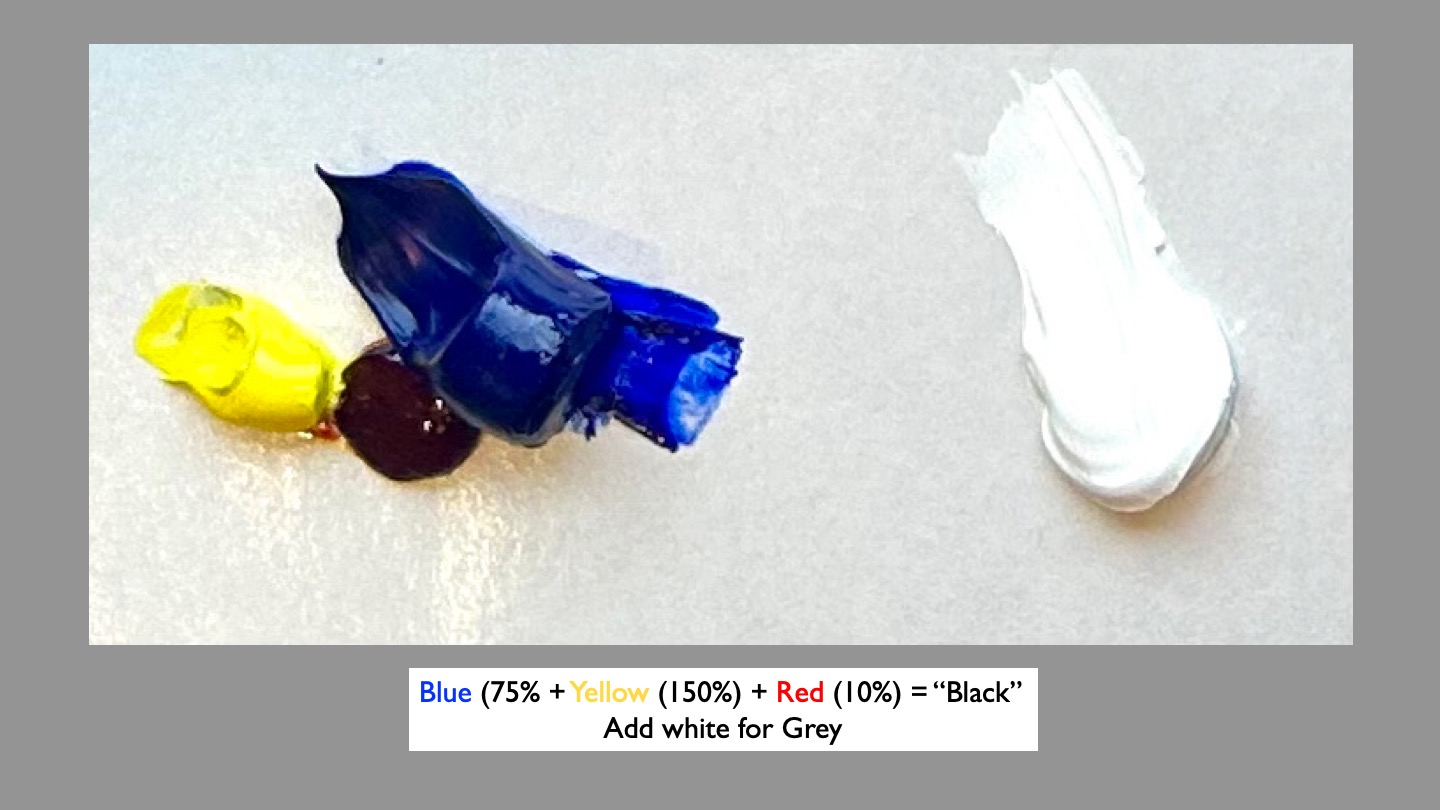
SESSION #2
Undercoating Your Canvas
TIP: Your undercoat should enhance your picture's color palette.
In the earlier classes, we mostly used my light rusty/orange undercoat (aka, ground). For this water lilies class, participants may select any color they prefer for their canvases undercoat. Other good options are light gray with tints of blue or neutral green, beige, or cream. Nonetheless, here's my recipe for my most common undercoat:
* indicates required; "Part" is used instead of a specified amount, because I mix different sized batches depending on how many canvases I am undercoating. All "parts" are approximate and are varied for effect.
5-6 parts Raw Sienna*
1-2 parts Burnt Sienna*
2-3 parts Naples Yellow
1-2 parts Yellow Ochre
1 part Cadmium Yellow
5-10 parts refined Linseed oil*
Mix paint thoroughly and add enough Linseed oil for the paint to be a liquid similar to wall paint.
If I need a lot, I will combine everything into a water-tight jar and shake to mix thoroughly. Apply the liquid in a thin coat, and as the liquid gets used up, add more linseed oil to the thicker base of paint that is at the bottom of the jar.
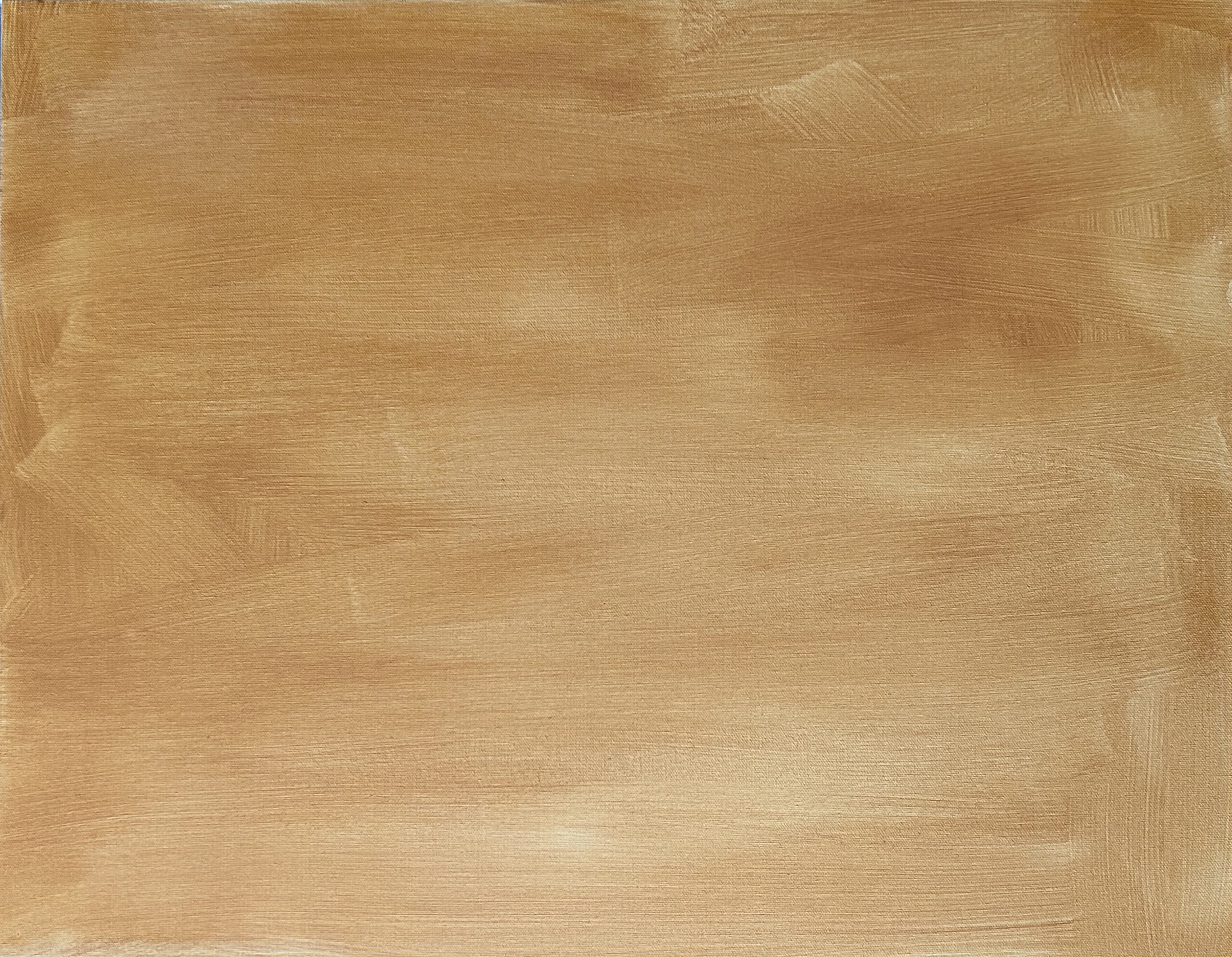
Choose the (Approximate) Color for Your Undercoat

SESSION #2 – Homework
Sketching
TIPS: • Get to know your image!!
• Sketch it a few times (quick and loose, simply with only the most important lines and shapes, use a ruler or create a grid)
Most of the Impressionists sketched scenes before they painted them, at least in the earlier years. When you look at these landscape sketches by Monet, Pissarro, and Sisley, you will see that they are quick, loose, and contain primary lines and some shading. These would take them a minute or two!
Homework: 3 Small Sketches
Although there are various ways of transferring your selected image to canvas (using a grid or projector, free handing, etc.). For this class, we'll sketch.
After you choose your image, you will do three small sketches as homework between session 2 & 3. You can use a ruler to determine where the horizon line is or to figure out how big to make the features. The FIRST SKETCH should be quick and simple with a delineation of the main areas.
Do the SECOND SKETCH slower, adding some details and shading. Really look at the image and learn its nuances. For the THIRD SKETCH, try again.
I selected a Warm Waters photo. My sketches are rough, but I learned more about the image each time. I don't sketch well, because I rarely draw. I use a projector to go straight from photo to canvas (see my video on this technique), but that's impractical for our class. I spent less than 5 minutes on each of my 3 sketches:
Using a Grid
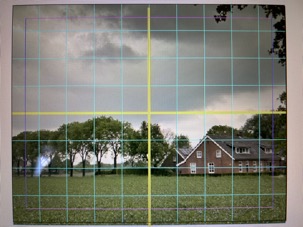
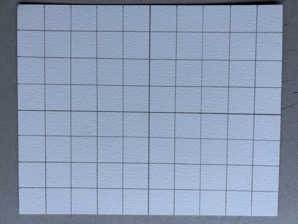
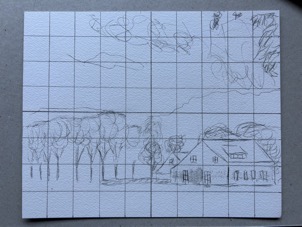
SESSION #3
Quick Painting
TIPS: Plan in advance for the colors you will use.
• Use the same color palette for every session.
• Arrange the colors on your palette the same way each time.
• Mix varieties of colors you will use (e.g., Blue: light, dark, medium, with green tint, etc.).
In session 3, you will quickly sketch the main parts of the image on a small canvas. You can use a pencil or pastel stick. Then, select the colors you think will fit the mood of your image. Spend about 30 minutes mixing a wide array of colors you will use.
I used a pencil to sketch on a 10x8 rust-undercoated canvas. I selected
Here's my 10x8 painting in stages. I spent a total of 50 minutes. The purpose of this small color sketch is to get more familiar with your image, go as fast as you can, and be unattached to the outcome!
Click the final draft below to understand my insights: It is fast and brutish, not to be hung! I won't use pencil next time, because it made for some dirty looking lines (see sun). The angle of the front wave is wrong and the ripple washing in looks as big as a wave! I poorly captured the foreground. I lost all of the blue in the sky! Some accent colors weren't right. Now, I know what to change for my final, bigger painting!
SESSION #3: Homework
Bigger Sketch
By this time you are getting very familiar with your image and are noticing thing you didn't originally see. For homework, sketch a larger, 14x11 version on higher-quality paper. Spend 10-15 minutes on this drawing!
SESSION #4
Let's Start Painting!
TIPS: Be Audacious!
• Work the whole canvas.
• Don’t fall in love with specific brushstrokes; they might get painted over later.
• Paint fast and loose, as much as possible.
• Don't overwork an area, better to let it dry and come back to it later.
• Accept that artists are their own worst critics. Perfection is not the goal.
Finally, we're ready to get started on the 20 x 24 canvas, and we'll work on this painting for five sessions. I completed the painting below in five sessions, each lasting about 60-90 minutes. I started by transferring my large sketch to the canvas. Here are my first session's examples:
Here's my progress over the next four sessions:
…and a couple of details:
TIPS: In the final painting sessions, enhance lights and darks.
• A good way to fix small, wet problems is with a Q-Tip cotton swab.
• The painting is "finished" when no additional changes are needed.
• Most imperfections that the artist sees will disappear over time.
Class Pages from Previous Classes
These webpages were for specific, in-person classes at the Carlsbad Senior Center. Some photos of paintings done by class participants are included.
How to Setup Your at Home Studio
Several students have expressed an interest in setting up their own studio at home. For that purpose, in 2023 I put together a list of the materials that I use, including paints, brushes, easels, cleaning supplies, and more.
Recent articles about Impressionism
Note: Some may require subscriptions.
– Smithsonian Magazine, "Later in Life, Claude Monet Obsessed Over Water Lilies. His Paintings of Them Were Some of His Greatest Masterpieces" Sept/Oct 2024
– The Guardian, "Mary Cassatt at Work" June 12, 2024
– Christie's Magazine, "Everything you need to know about Impressionism: how a group of rebel artists ‘freed painting’" April 17, 2024
– Christie's Magazine, "150 Years of Impressionism: How a small group of artists changed the way we see" March 14, 2024.
– Christie's Magazine, "'Both Blades Buckled': The Day Edouard Manet Fought a Duel" November 23, 2023
– New Yorker Article: (Manet & Degas) "The Long, Petty Friendship That Changed Art" October 11, 2023
– Washington Post: "That dreamy haze in Monet’s impressionist paintings? Air pollution, study says." January 31, 2023
– National Gallery of Art: "Birth of Impressionism Explored in Exhibition at Musée d’Orsay and National Gallery of Art, Washington" June 13, 2023
– New York Times [subscription]: (Morisot) "The Impressionist Art of Seeing and Being Seen" June 4, 2021
– New York Times: "Under a Monet Painting, Restorers Find New Water Lillies." June 5, 2019

